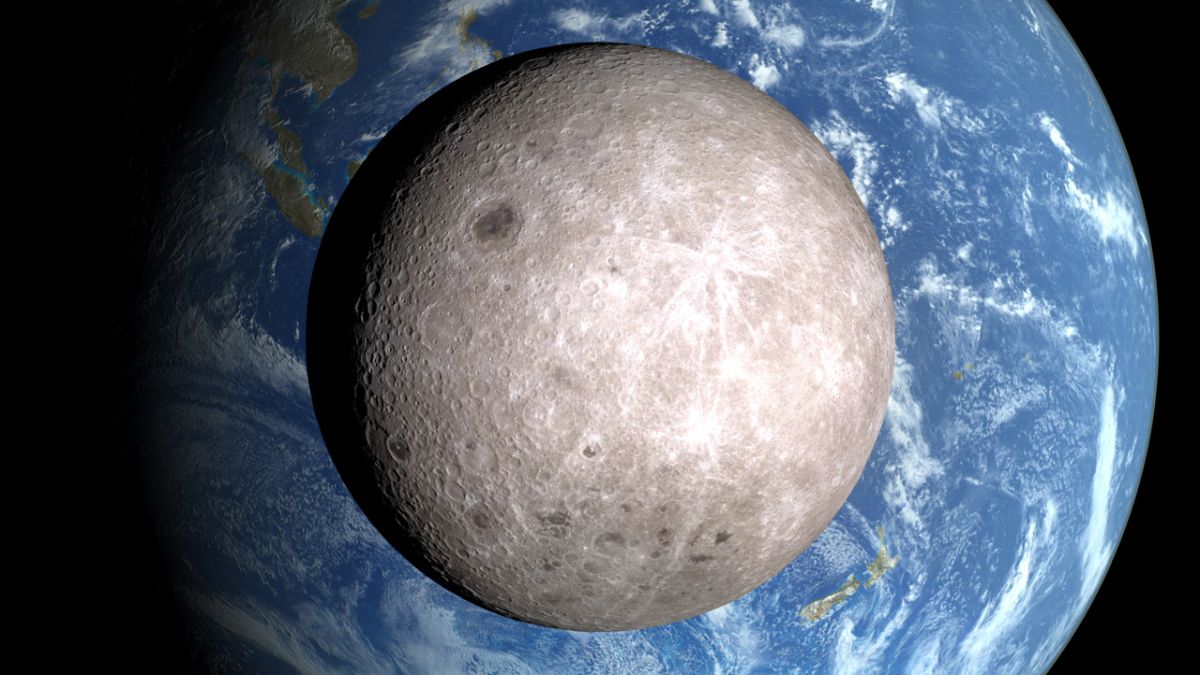
China Brought Something Unexpected Back From The Far Side of The Moon - Dust has yielded an unexpected microscopic treasure we've never seen before Science Alert - October 21, 2025

A close examination of lunar material collected during the China National Space Administration's Chang'e-6 mission revealed specks of dust from a kind of water-bearing meteorite so fragile it seldom survives the trip through Earth's atmosphere.
The Moon's Largest Crater Has Something Odd Going on - And Astronauts Are Heading There Science Alert - October 16, 2025
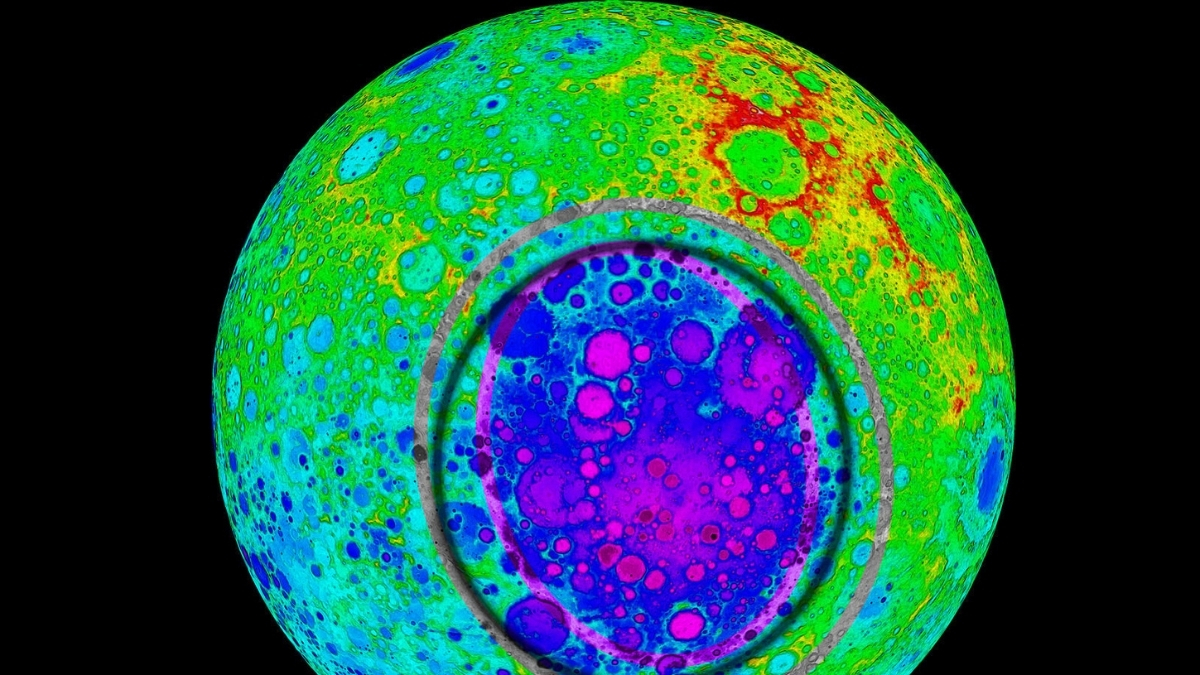
The gravitational interaction between the Earth and Moon has led to one hemisphere of the Moon being locked facing away from Earth. Don't be misled, though. The Moon does rotate, it just takes as long to rotate once on its axis as it takes to complete an orbit of Earth. This is known as synchronous rotation, and on the far side, there is a massive crater called the South Pole-Aitken basin. Spanning over 1,930 km from north to south and 1,600 km east to west.
The Moon's Deepest Scar Still Glows With Clues to Its Fiery Birth SciTech Daily - October 14, 2025
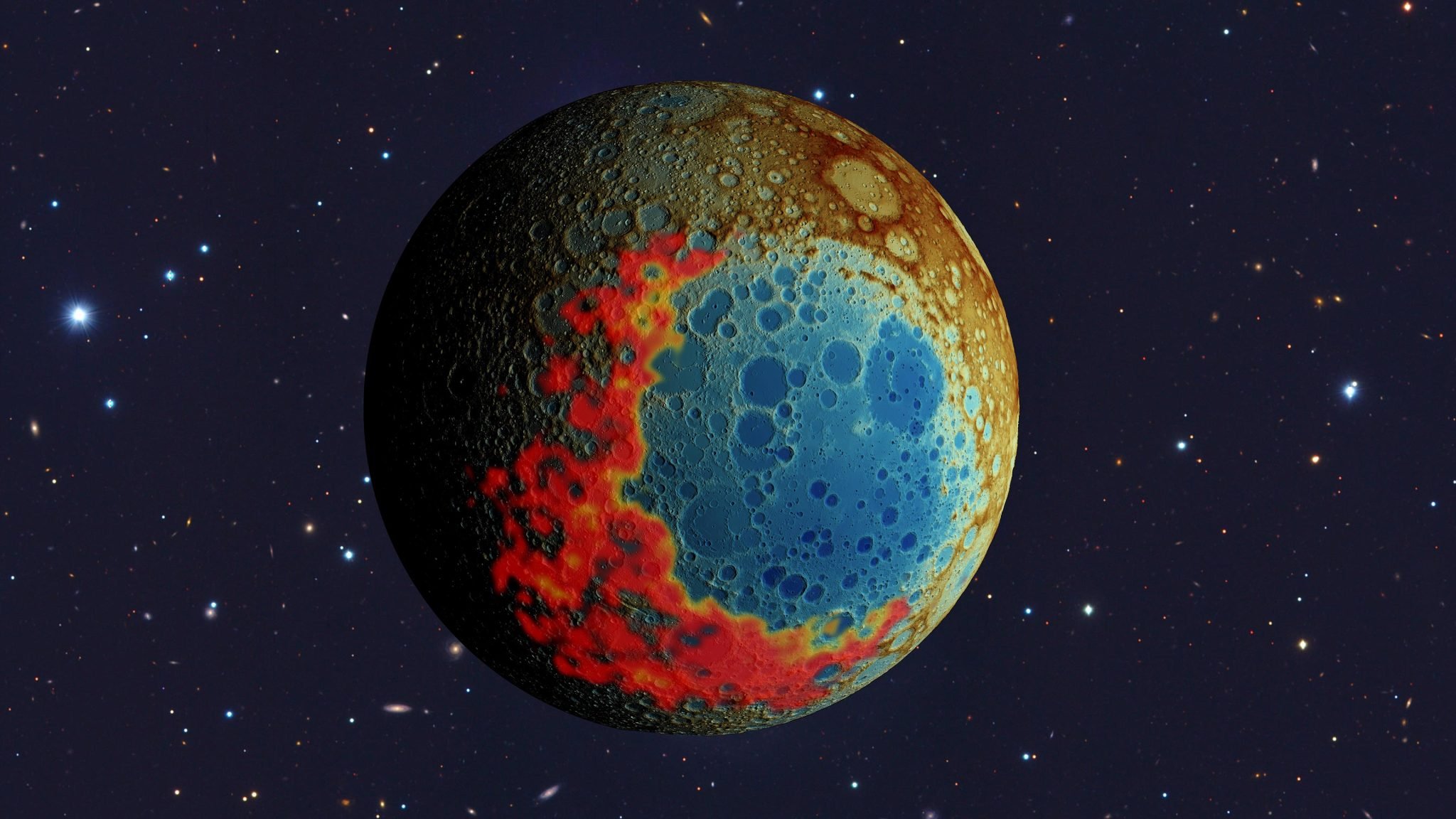
A new study reveals that a massive asteroid struck the moon from the north roughly 4.3 billion years ago, creating the enormous South Pole-Aitken Basin. This discovery overturns earlier theories about the impactÕs direction and suggests that debris from deep within the moonÕs interior still lies buried there.
The Moon's Deepest Scar Still Glows With Clues to Its Fiery Birth SciTech Daily - October 14, 2025

A new study reveals that a massive asteroid struck the moon from the north roughly 4.3 billion years ago, creating the enormous South Pole-Aitken Basin. This discovery overturns earlier theories about the impactÕs direction and suggests that debris from deep within the moonÕs interior still lies buried there.
Our Moon Is Slowly Drifting Away. Here's What We Can Expect to Happen. Science Alert - September 16, 2025
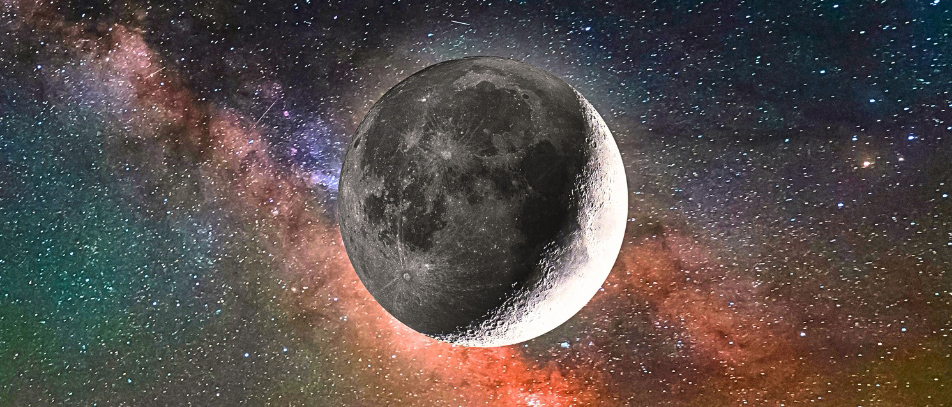
The Moon is getting 1 1/2 inches (3.8 centimeters) farther away from the Earth every year.
New 'quasi-moon' discovered in Earth orbit may have been hiding there for decades Live Science - September 12, 2025
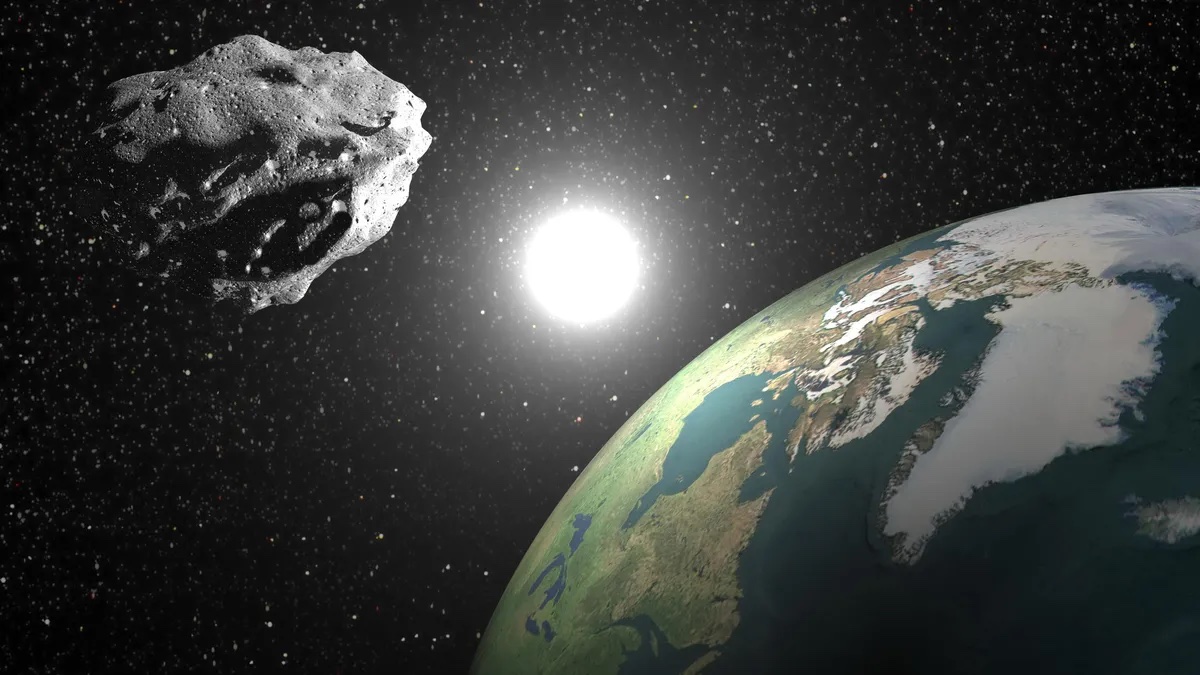
A near-Earth asteroid lurked undetected for decades until a telescope in Hawaii spotted it earlier this year. It may be Earth's newest quasi-moon.
AI uncovers subsurface entrances on the moon PhysOrg - July 30, 2025
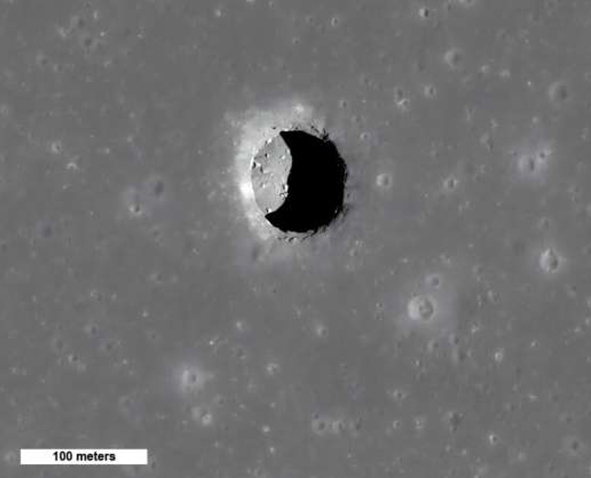
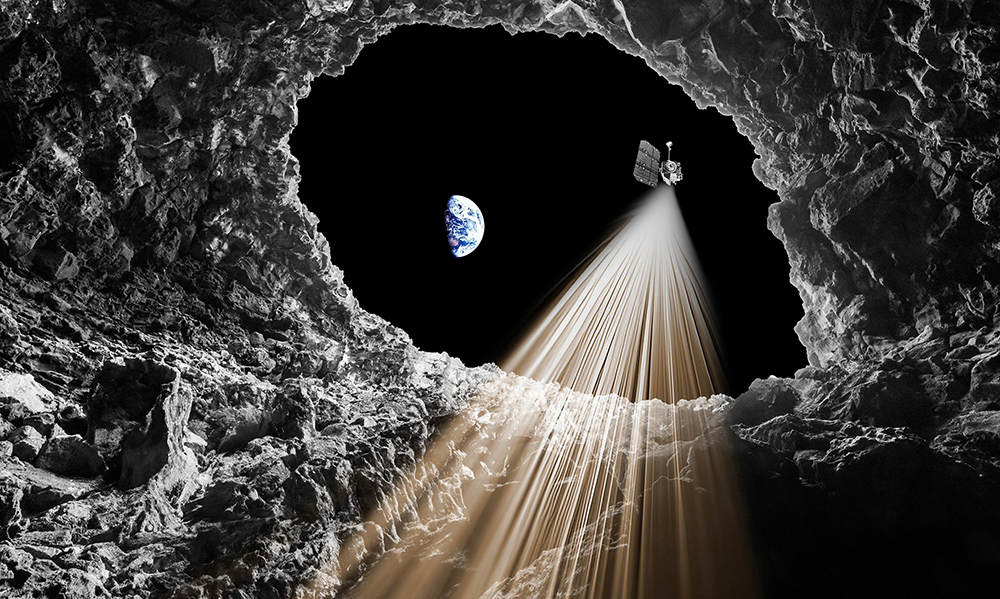
How can artificial intelligence (AI) be used to locate lunar pits and skylights, which are surface depressions and openings, respectively, that serve as entrances to lava caves and lava tubes? This is what a recent study published in Icarus hopes to address as an international team of researchers investigated using machine learning algorithms to more efficiently identify pits and skylights on lunar volcanic regions (lunar maria) of the moon. This study has the potential to help researchers develop new methods in identifying key surface features on planetary bodies that could aid in both robotic and human exploration.
Fiery Orange Gems From The Moon Reveal Secrets of Its Violent PastMoon Science Alert - June 13, 2025
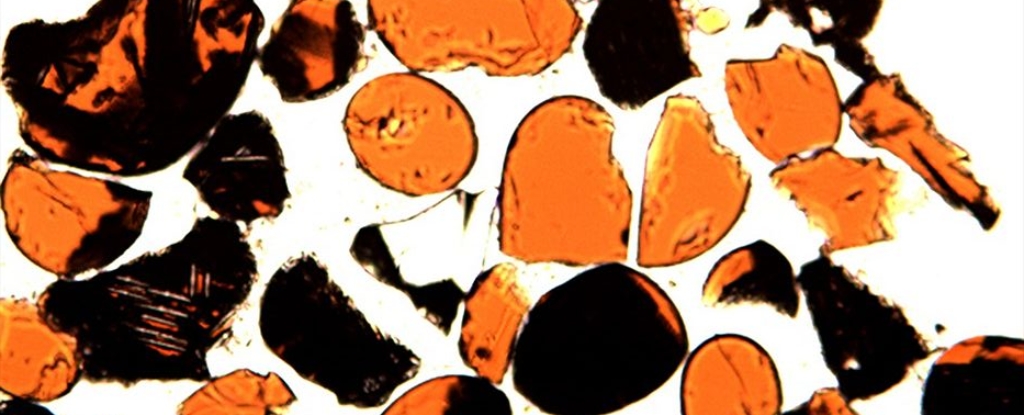
When Apollo astronauts first set foot on the lunar surface, they expected to find grey rocks and dust. What they didn't anticipate was discovering something that looked almost magical: tiny, brilliant orange glass beads scattered across the Moon's landscape like microscopic gems. These beads, each smaller than a grain of sand, are actually ancient time capsules from when the Moon was volcanically active billions of years ago.
NASA Beams The First GPS Signals to The Moon Science Alert - March 7, 2025
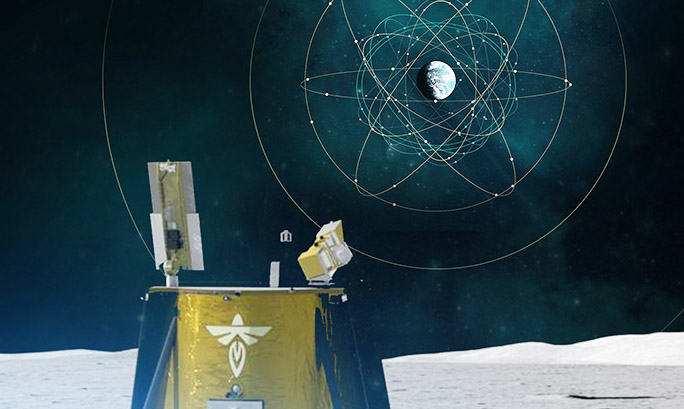
To lay the foundations for a lunar navigation system, NASA's Lunar GNSS Receiver Experiment (LuGRE) has successfully received global positioning system (GPS) signals beamed from Earth's orbit. Part of the Blue Ghost mission that landed on the Moon on March 2, LuGRE's instrument received and tracked communications from the Global Navigation Satellite System (GNSS); a network of satellite-based location technologies that includes GPS.
Pseudoscience - the moon is an artificial satellite brought here by extraterrestrials for various reasons, such as observation of planet earth, a waystation to other parts of the universe, lunar mining, and more.
Our Moon May Have Been Stolen, And It's Not The Only Example We Know of Science Alert - October 5, 2024
There's nothing else like Earth and its Moon in the entire Solar System. Other planets either have multiple moons, or none at all, but the mass ratio of our world and its hefty satellite is quite unique. The question of our unusual moon's origin, therefore, is one of planetary evolution, figuring out the pathways for various planet-moon configurations. Right now, the leading theory is that the Moon is either Earth's child or its sibling - born of the same material in the same region of the Solar System. New research is posing a challenge to that notion, suggesting that the Moon could instead be adopted, born elsewhere in the Solar System only to be later embraced by the power of Earth's gravity.
Changes in The Moon's Gravity Hint at Unexpected Movement Deep Beneath Its Surface Science Alert - October 4, 2024
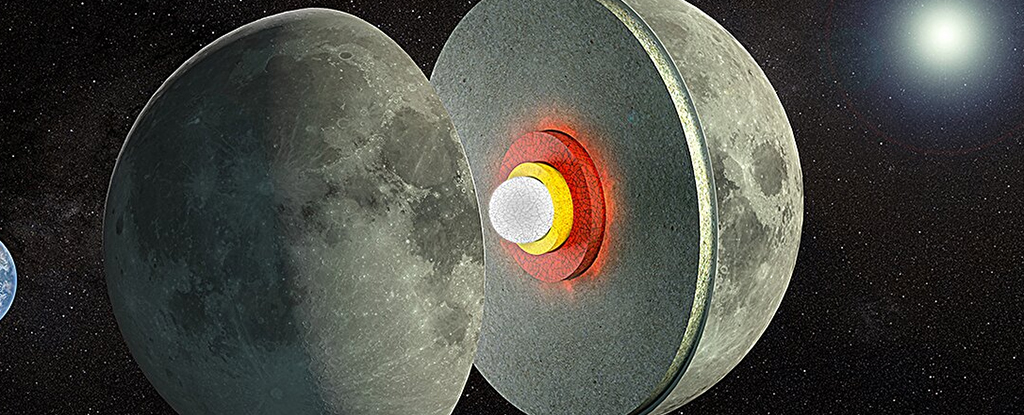
The presence of a partially-molten layer between the Moon's rocky mantle and solid metal core is looking more likely following a study on its changing shape and gravity.
Asteroid 2024 PT5 is an Earth mini-moon orbiting the planet from Sept. 29 - Nov. 25, 2024 Wikipedia
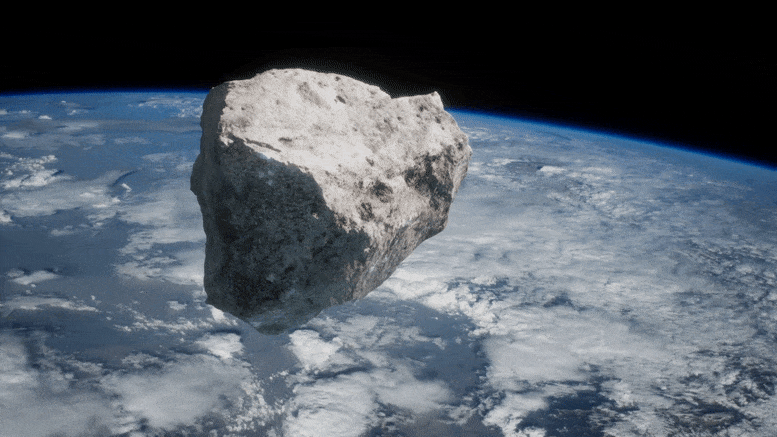
The Standard Story Of The Moon's Origins Is Facing Another Challenge IFL Science - September 22, 2024
Extremely rare, vibrant "moonbows" were spotted in the night sky above the U.S. shortly before the rise of the blue supermoon on Monday (Aug. 19) Live Science - August 20, 2024
At least two lunar rainbows, including a stunning "double moonbow," have been spotted above the U.S. in the lead-up to the blue supermoon. Moonbows, also known as lunar rainbows, are created in the same way as their solar counterparts, with one obvious difference: they appear when moonlight, rather than sunlight, reflects and refracts off falling raindrops. But they are much rarer because they can only be seen around a full moon, when our planet's natural satellite is at its brightest in the night sky.
Meteorite impact vaporization is the dominant process that creates the lunar atmosphere Live Science - August 5, 2024
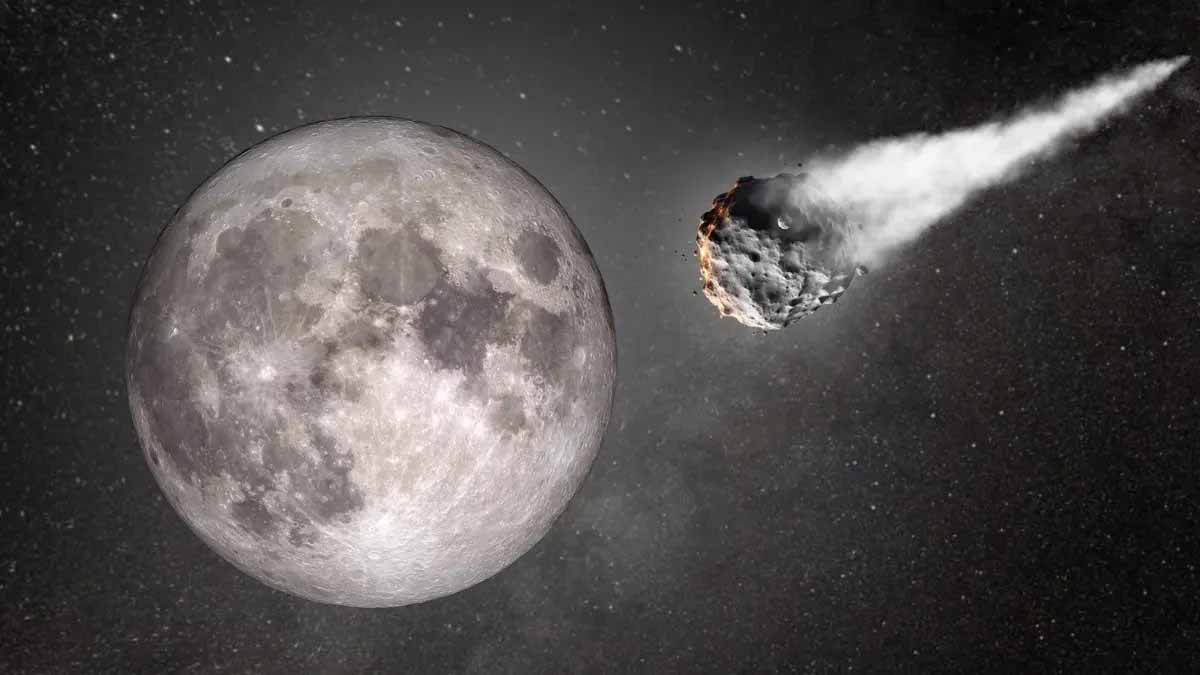
It is easy to imagine the moon as an atmosphere-less hunk of rock orbiting Earth. However, while lacking breathable air, our planet's loyal natural satellite companion does have a thin and wispy atmosphere.
Chang'e-5 Mission Discovers Significant Water-Rich Mineral in Moon Soil. There's water on the Moon, and scientists have just confirmed where a lot of it may be hiding Science Alert - August 7, 2024
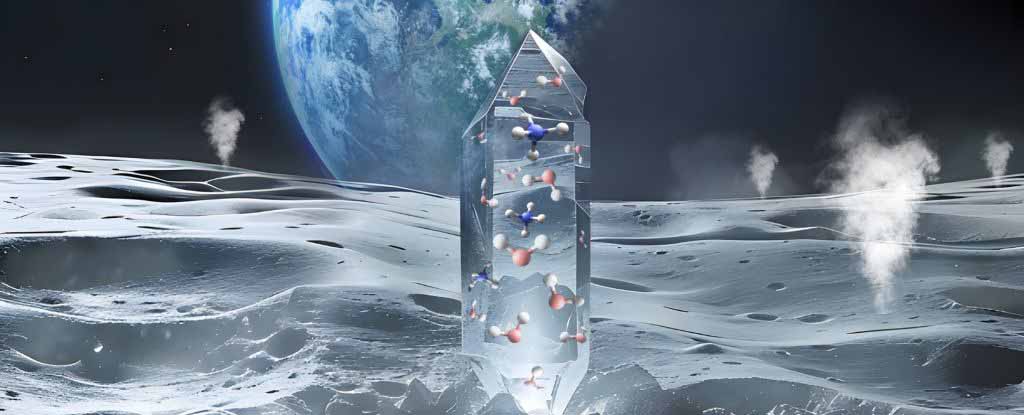
The mineral is similar to novograblenovite, which was only identified a few years ago in basaltic rock from Russia's Kamchatka Peninsula. Both the lunar and terrestrial versions have the chemical formula (NH4)MgCl3į6H2O, and have similar crystalline structures.
'Wonder Material' Graphene Has Been Discovered on The Moon Science Alert - August 5, 2024
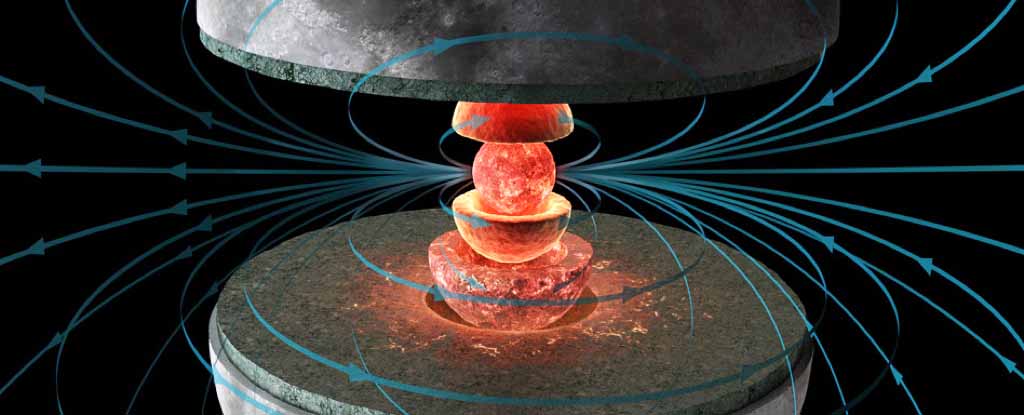
There could be lots of this supermaterial on the surface of the Moon.
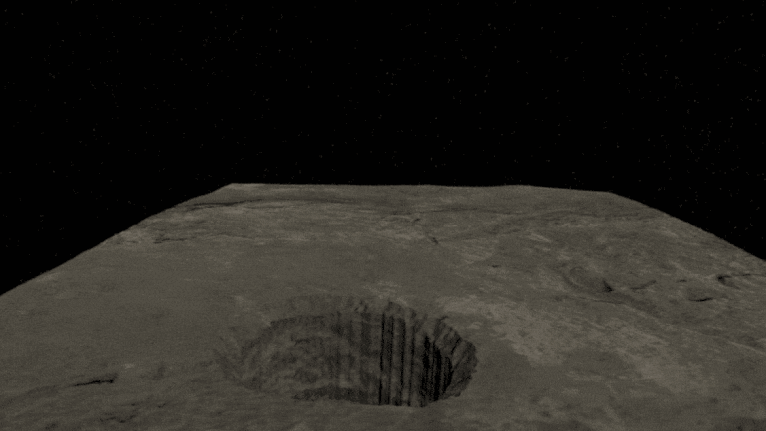
Moon cave 'could be base' for future astronauts, scientists say Sky News - July 16, 2024
An underground cave stretching tens of metres below an open pit on the moon has been discovered which could be a potential base for future astronauts, say scientists. This is the first lunar tunnel to be found which could be accessible to humans, according to researchers.
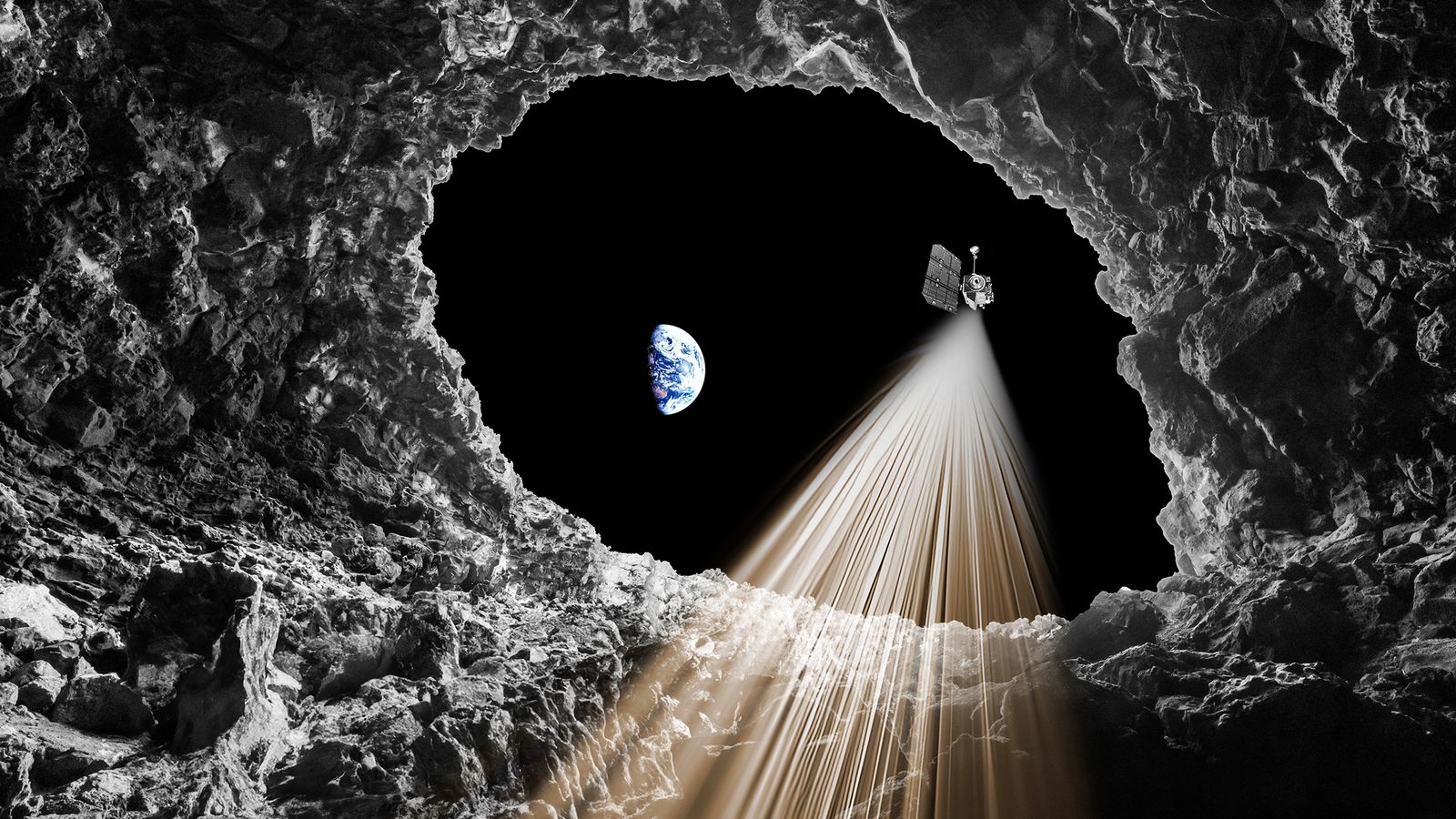
Scientists have confirmed a cave on the moon that could be used to shelter future explorers PhysOrg - July 16, 2024
Scientists confirm first lunar cave that could help shelter astronauts from the moon's extreme temperatures CNN - July 16, 2024
Scientists have long theorized the existence of lunar caves - underground passageways formed through volcanic processes that are connected to the pits covering the moonÕs surface. Now, a team of international researchers has found the first direct evidence that the moonÕs deepest known pit connects to a cave that could provide shelter to astronauts. To find the cave, the team studied archival radar measurements of a pit found within a vast plain called Mare Tranquillitatis, or the Sea of Tranquility, which was the landing site for the Apollo 11 mission in 1969
Time Ticks Faster on The Moon. Now We Know Precisely How Much Science Alert - July 9, 2024
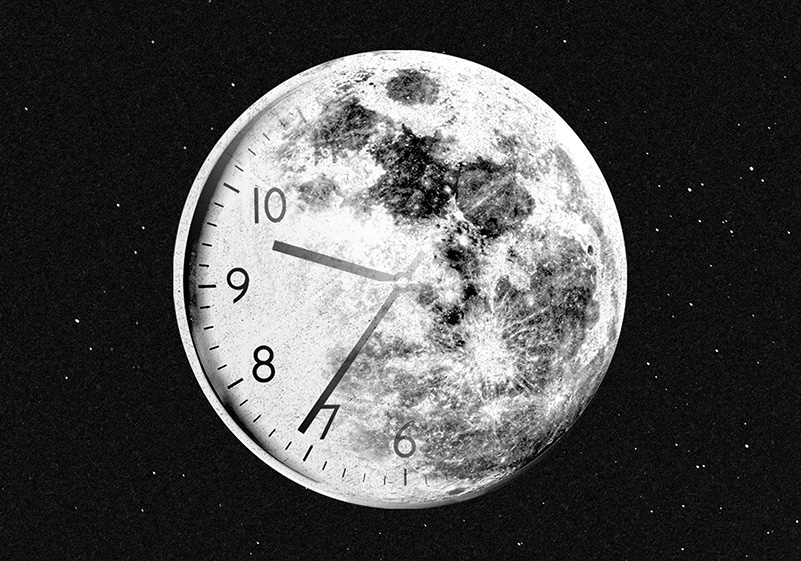
Since astronauts departed the lunar surface for the last time 52 years ago, time has ticked on by. Relative to us Earthlings, the Moon has pined for our return just a little longer Š by roughly 1.1 seconds.
China rover Chang'e 6 returns historic samples from far side of the moon and they may contain secrets to Earth's deep past Live Science - June 25, 2024
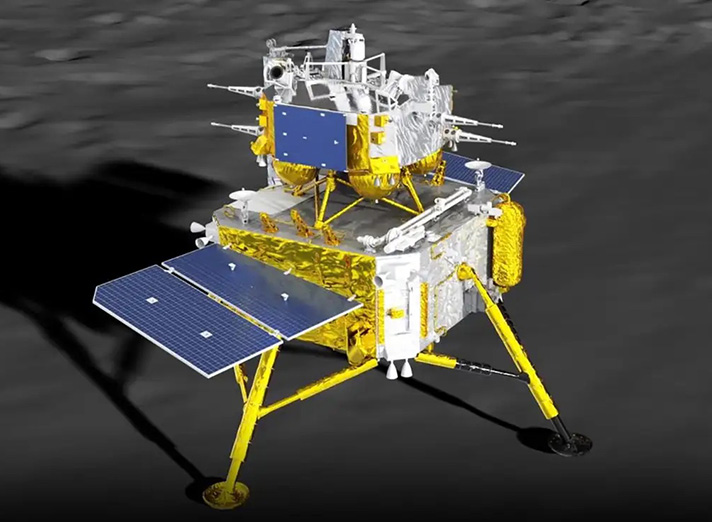
Chinese Lander Chang'e 6 Returns First Ever Samples From Far Side Of The Moon Landing in the Inner Mongolia desert. IFL Science - June 25, 2024
On June 1, Chang'e 6 touched down softly near the Lunar South Pole. This was the second time China achieved this feat, and they remain the only nation to have done so. China just landed a probe on the far side of the Moon - this time nearer the south pole, to gather volcanic samples using a scoop and drill, and blast them back to Earth. They've partnered with Sweden, France and Italy. Proving the tech needed to land Chinese astronauts by 2030.
NASA To Introduce "Coordinated Lunar Time" For The Moon To Deal With Time Dilation IFL Science - April 4, 2024
NASA Is Creating a 'Moon Standard Time' Science Alert - April 4, 2024
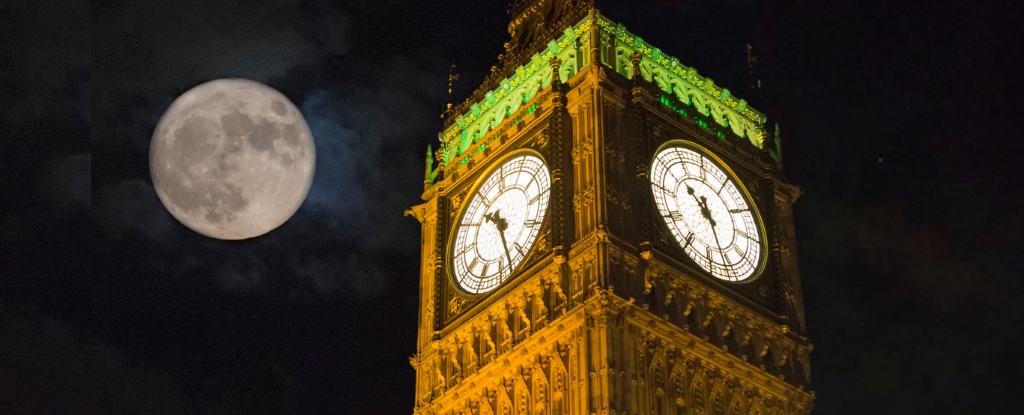
The White House announced it is directing NASA to create a unified time standard for the Moon and other celestial bodies, as governments and private companies increasingly compete in space.
Undiscovered extra moons may orbit Earth. Could they help us become an interplanetary species? Live Science - February 29, 2024
About Mini Moons
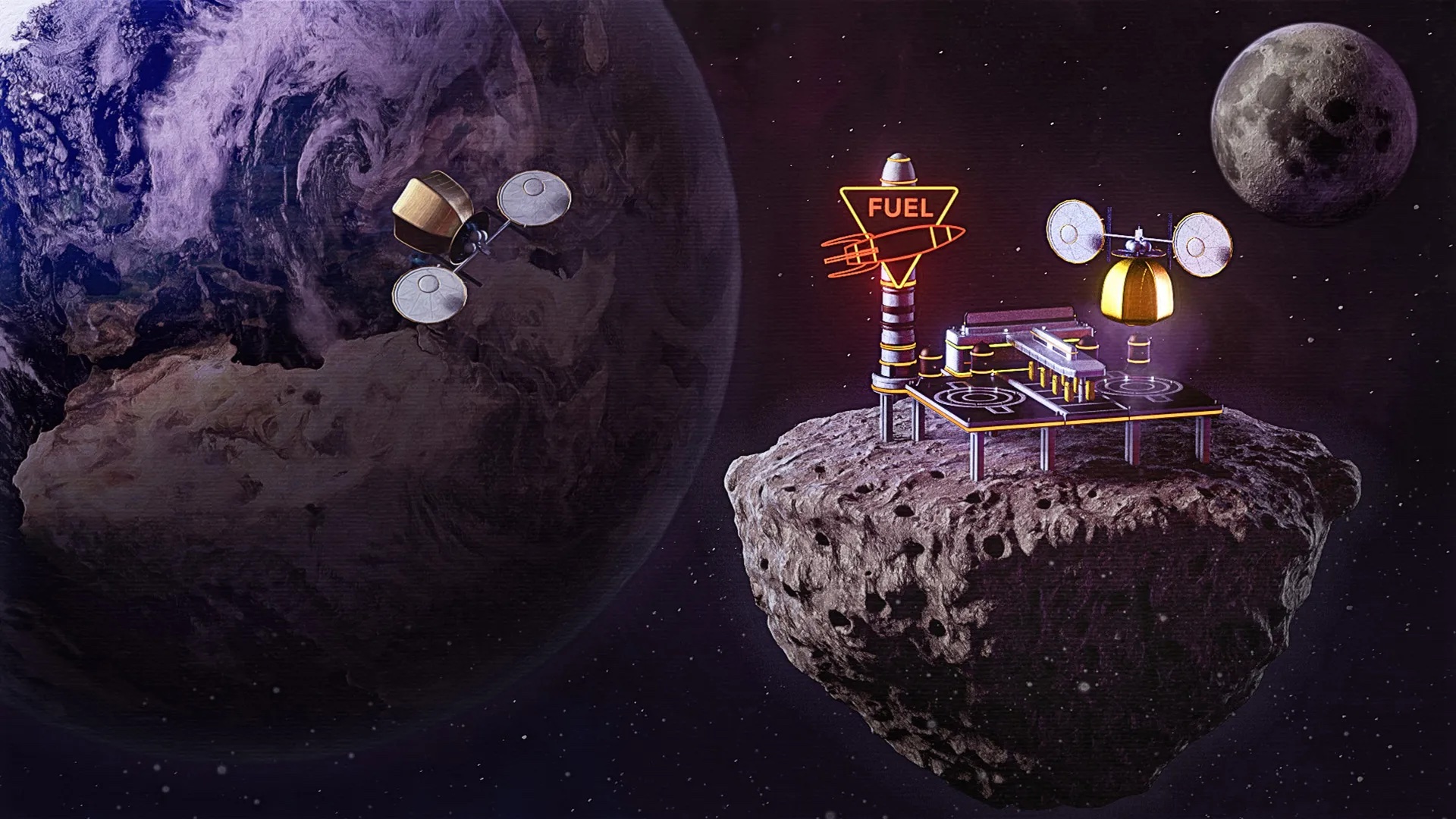
Due to their proximity to Earth, minimoons are prime candidates for exploration. Now, some scientists want to use these tiny satellites to push humanity further into the cosmos. Because of their proximity to Earth, these minimoons have warranted close scientific scrutiny. But more recently, some experts have eyed minimoons and other near-Earth asteroids for a different reason: They have the potential to act as stepping stones in our exploration of the cosmos.
Earth has extra moons, and they may hold the secrets of our solar system's past Live Science - February 25, 2024
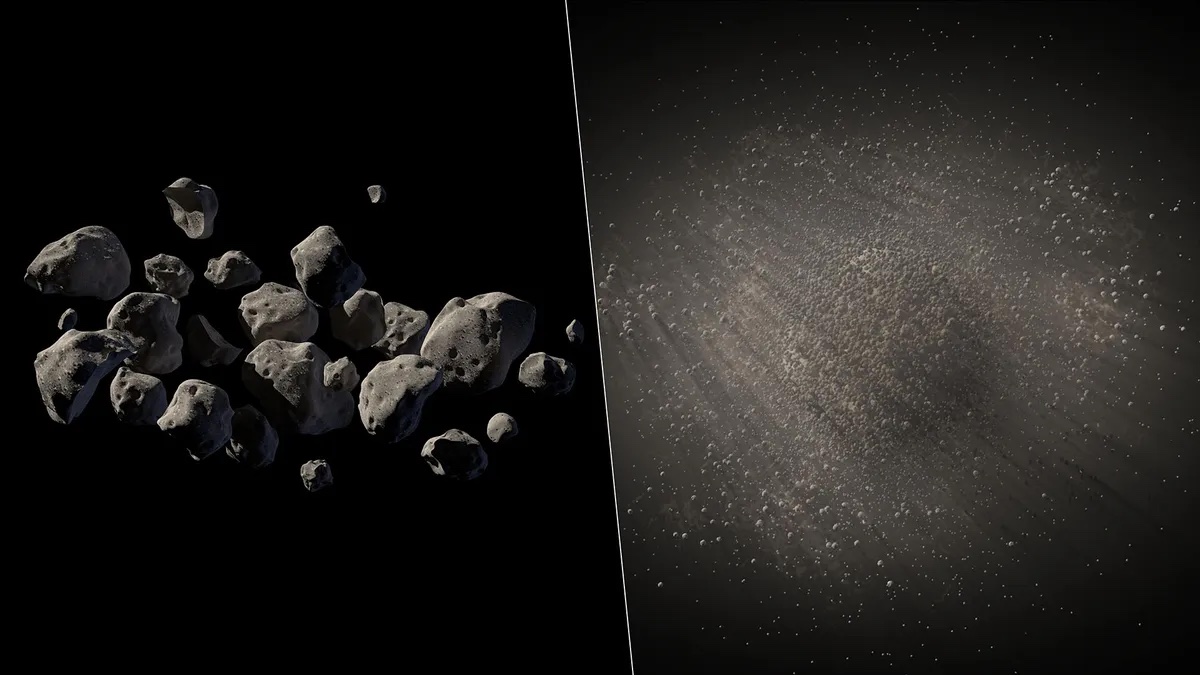
Among the thousands of asteroids swarming near Earth's orbit, minimoons - tiny cosmic bodies, whose orbits are partially governed by Earth and partially by other solar system bodies - may be prime candidates for learning about the origins of the solar system.
Japan's moon lander survives a second weeks-long lunar night regaining power on the eighth day after its landing, when it got the sun PhysOrg - February 26, 2024
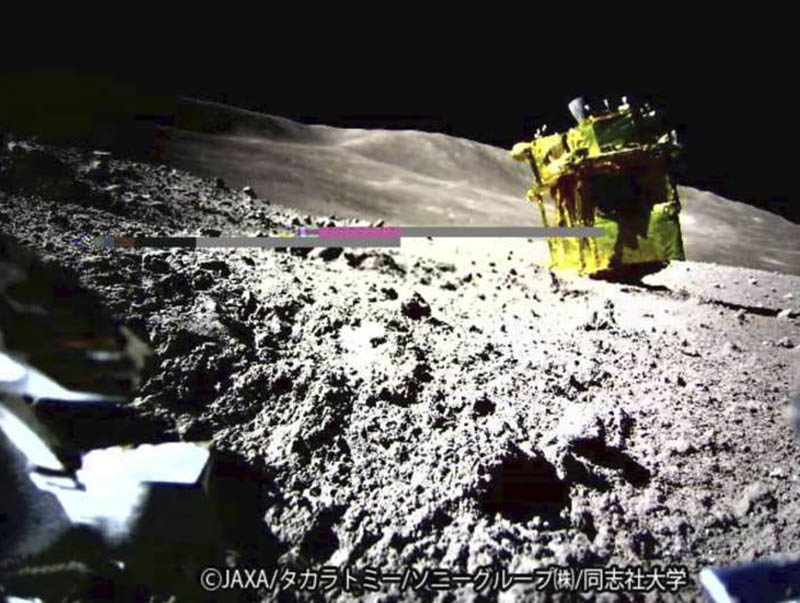
JAXA called the signal, received late Sunday night, a "miracle" because the probe was not designed to survive the lunar night, when temperatures can fall to minus 170 degrees Celsius (minus 274 degrees Fahrenheit). The craft, Smart Lander for Investigating Moon, or SLIM, made a "pinpoint" touchdown on Jan. 20, making Japan became the fifth country to successfully place a probe on the moon.
But the probe landed the wrong way up, with its solar panels initially unable to see the sun and had to be turned off within hours. SLIM regained power on the eighth day after its landing, when it got the sun. For several days, SLIM collected geological data from moon rocks, before going back into hibernation in late January to wait out another lunar night. JAXA said Sunday's communication was kept short because it was still "lunar midday" and SLIM was at a very high temperature, about 100 Celsius (212 Fahrenheit). JAXA is now preparing to make contact again when the vehicle has cooled. Scientists are hoping to find clues about the origin of the moon by the comparing mineral compositions of moon rocks and those of Earth.
February 23, 2024 - The Odysseus lunar lander, nicknamed "Odie," has become the first US-made spacecraft to touch down on the moon in 50 years. Odie is designed to assess the lunar environment of the moon's south pole ahead of NASA's current plan to return a crewed mission there in late 2026.
Lander 'alive and well' after company scores first US moon landing since Apollo era PhysOrg - February 23, 2024
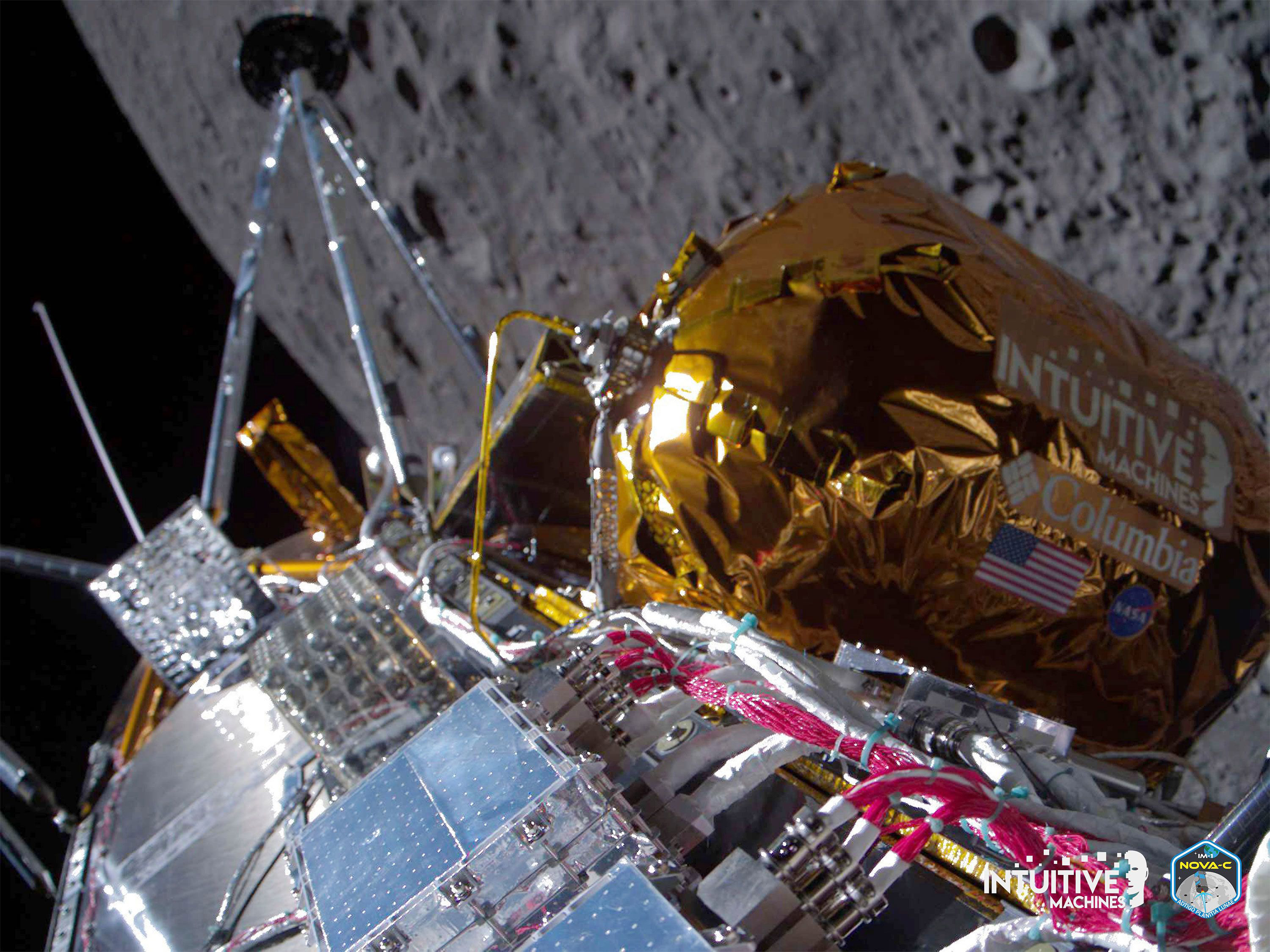
Video: Historic Odysseus moon mission marks a milestone in reaching the lunar surface CNN - February 25, 2024
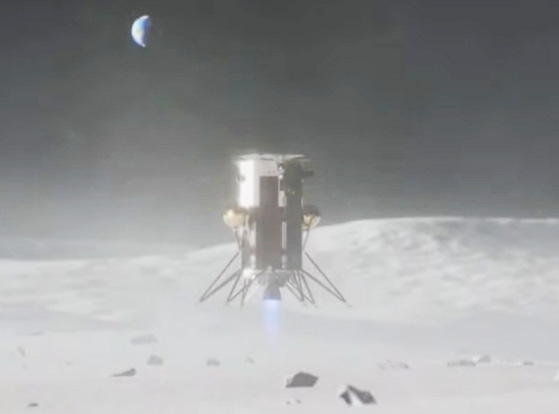
Odysseus lander tipped over on moon entry but is able to send back data Science Alert - February 26, 2024
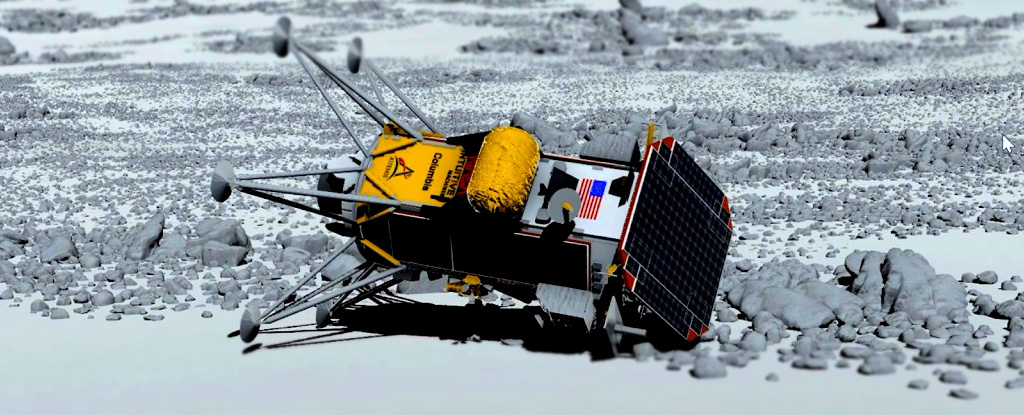
Odysseus lunar lander shares new photos from its harrowing descent CNN - February 26, 2024
Moon Lander Odysseus Transmits a Poignant Farewell as Death Approaches For Now Science Alert - March 4, 2024
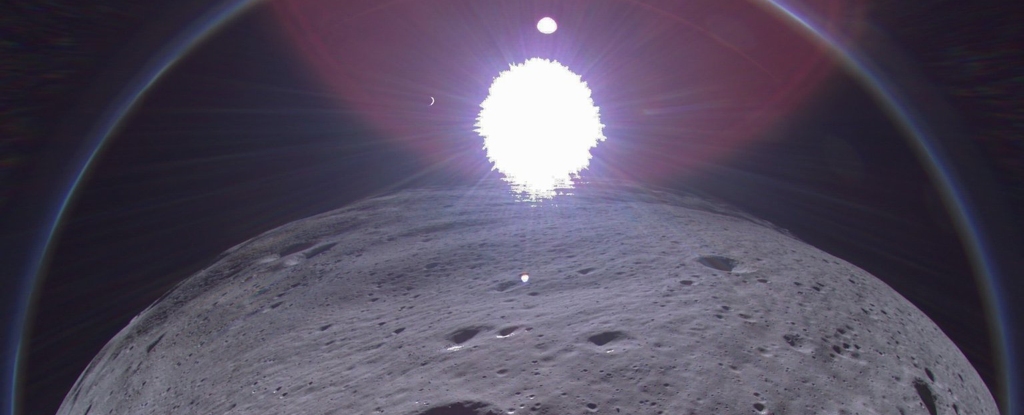
A mere one week after stumbling to the lunar surface in its historic journey, the Moon lander Odysseus has officially ended its brief mission Š at least, for now. Mission control has shut down the lander in preparation of the long lunar night, but not before receiving a final image of a cratered landscape and dark sky featuring a tiny crescent Earth in the blinding glare of the Sun.
With the lunar touchdown of the Odysseus spacecraft, the world's most expensive living artist has now earned a new, space-age superlative: Jeff Koons' creation is now the first 'authorized' work of art on the moon CNN - February 22, 2024
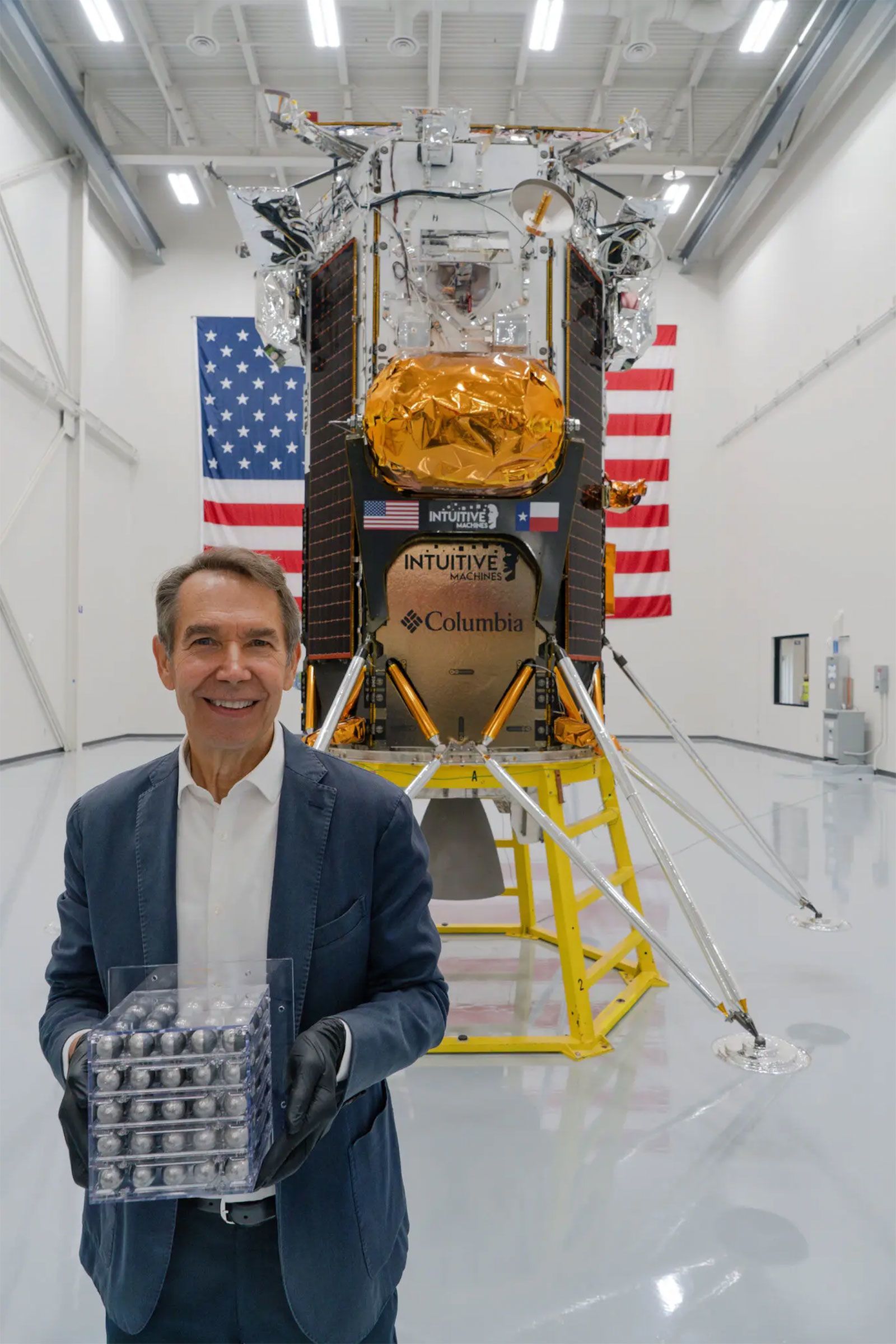
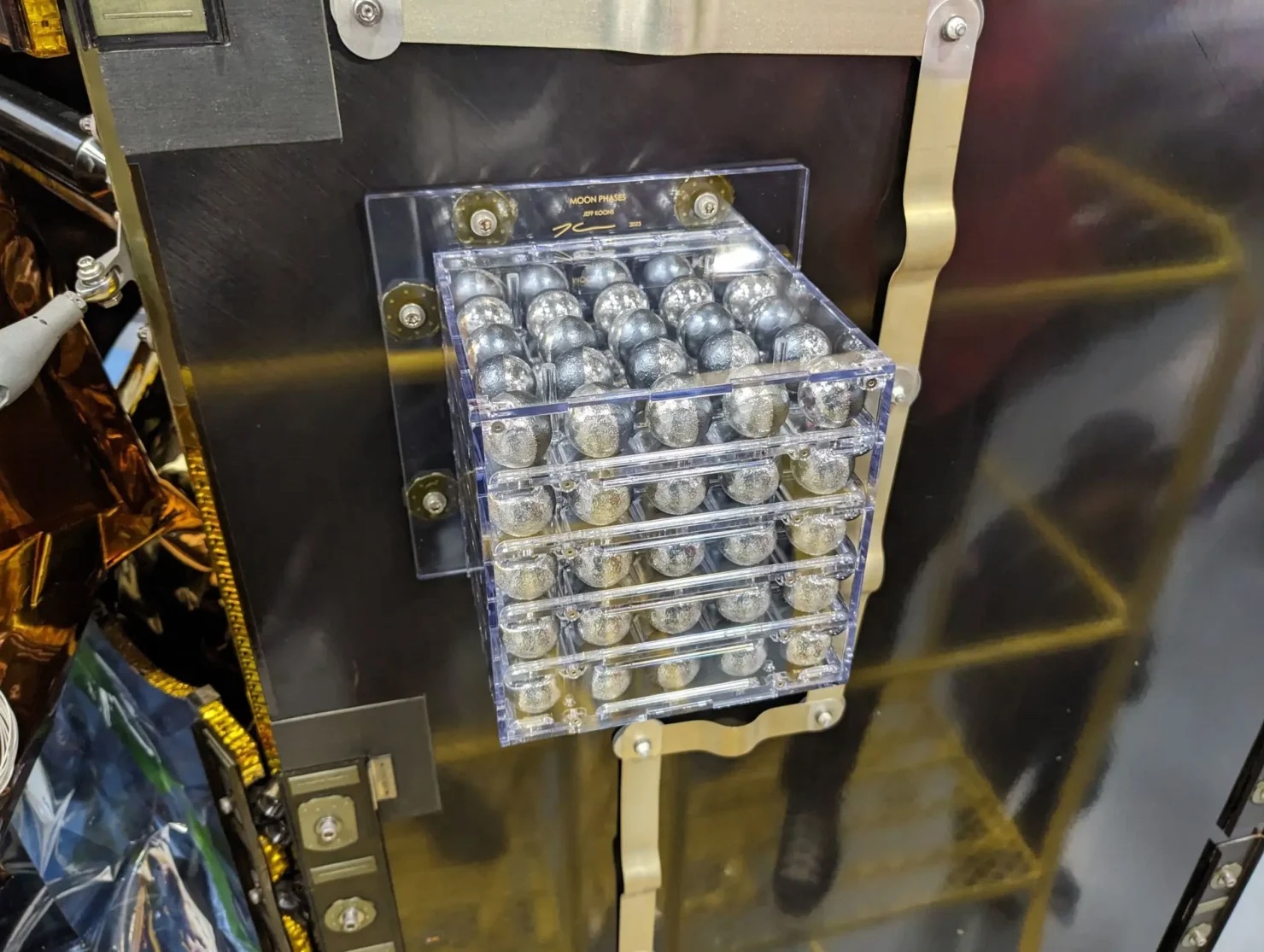
Exchanging the gallery space for a transparent box in space, the American artist Jeff Koons had a new sculpture series hitch a ride with Odysseus.Each sculpture is inscribed with the name of a groundbreaking figure in human history, including Aristotle, David Bowie, Leonardo da Vinci, Gandhi, Billie Holiday, Gabriel Garcia Marquez, Andy Warhol, Virginia Woolf, and more,
Scientists discover the moon is shrinking, causing landslides and instability in lunar south pole PhysOrg - January 26, 2024
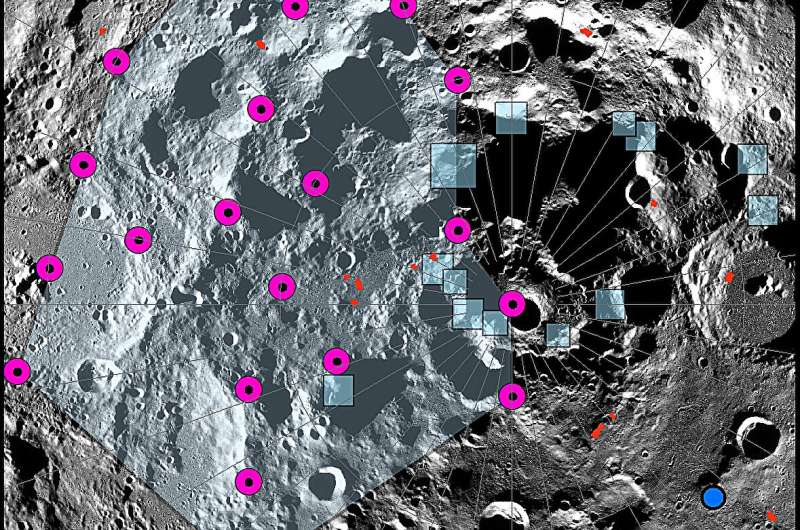
Earth's moon shrank more than 150 feet in circumference as its core gradually cooled over the last few hundred million years. In much the same way a grape wrinkles when it shrinks down to a raisin, the moon also develops creases as it shrinks. But unlike the flexible skin on a grape, the moon's surface is brittle, causing faults to form where sections of crust push against one another.
Why does the moon sometimes have a 'halo'? Live Science - January 9, 2024
If you've ever looked up at the full moon in the night sky, you may have noticed a large halo of light around it. But why does this lustrous ring sometimes encircle our natural satellite? While it might seem like a sign you need a new glasses prescription, it's really caused by ice crystals high up in the atmosphere.
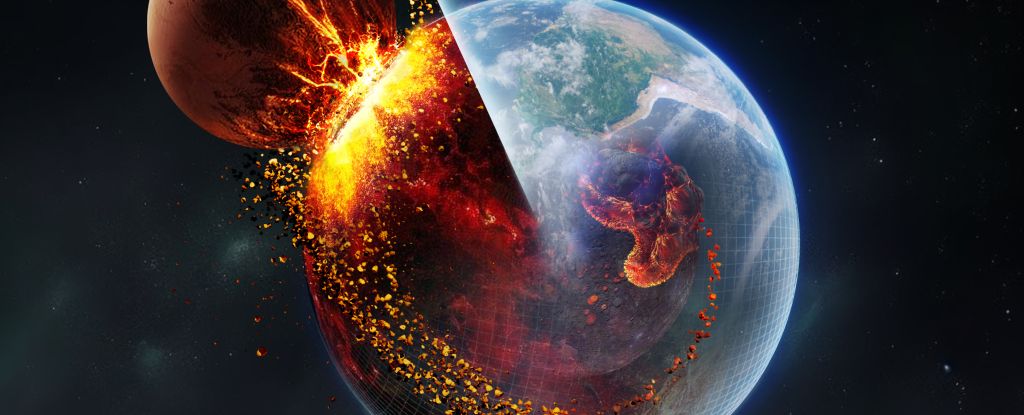
Theia Impact: Giant-impact Hypothesis
Scientists Detect Traces of an Ancient Alien World Beneath Earth's Mantle - Theia
Science Alert - November 1, 2023
Some 4.5 billion years or so ago, scientists believe, something big smacked into Earth and knocked it off balance. The result was a bunch of debris, hurled into space, swirling around until it formed the Moon. Of the big object, thought to be the size of Mars, and named Theia, nothing much was left or so they thought.
Researchers from China, the US, and the UK have uncovered evidence that chunks of Theia ended up inside the Moon. And evidence also now suggests that chunks of Theia ended up inside Earth, too. If that's the case, the giant impact hypothesis could solve a mystery that has bothered scientists for more than a decade: the presence of dense, continent-sized blobs of material, buried deep under Earth's mantle some 2,900 kilometers (1,800 miles) down, curved around its core.
Findings challenge the traditional notion that the giant impact led to the homogenization of the early Earth. Instead, the Moon-forming giant impact appears to be the origin of the early mantle's heterogeneity and marks the starting point for the Earth's geological evolution over the course of 4.5 billion years.
A chunk of the moon appears to be orbiting near Earth, new study suggests
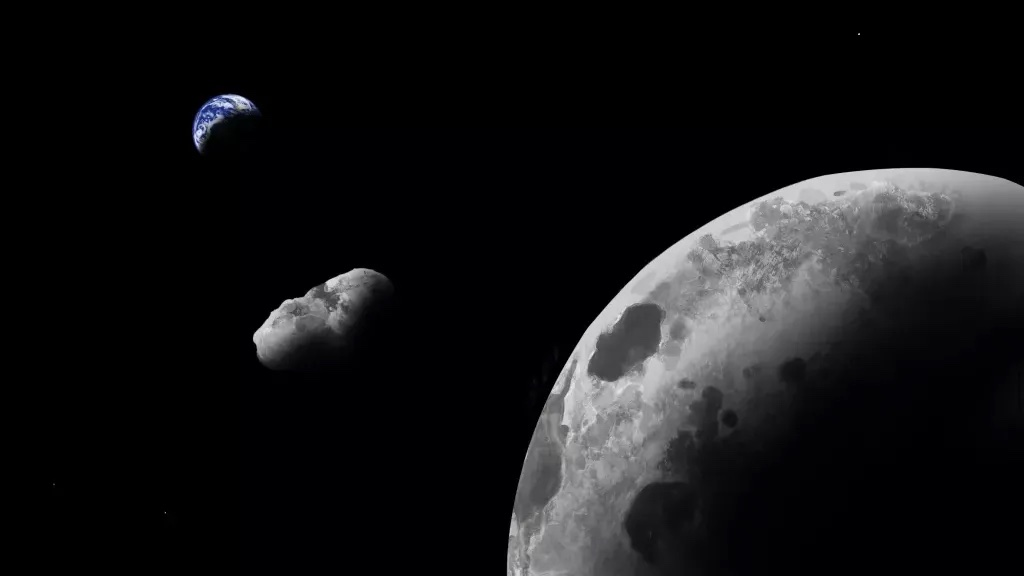
Astronomers have found more evidence that a near-Earth asteroid is an ejected chunk of the moon. The asteroid Kamo'oalewa - a Hawaiian name that means "the oscillating fragment" - is a Ferris-wheel-size rock chunk that orbits within 9 million miles (14.4 million kilometers) of Earth every April.
Massive Heat-Emitting Mass Discovered Buried Under The Surface Of The Moon IFL - October 17, 2023
A large mass of granite that has been slowly releasing heat has been discovered buried underneath a crater on the Moon. This is not science fiction, it's ancient volcanism. The Moon used to have lava fields and eruptions, but astronomers had never actually found a more traditional Earth-like volcano - until they looked at what was beneath the Compton and Belkovich craters on the far side of the Moon.
A Mysterious Hidden Force Is Generating Water on The Moon Science Alert - September 18, 2023
We know there's ice on the Moon - what's less clear is where it came from. A new study suggests that waves of electrons, arriving indirectly from Earth and the Sun, are contributing to the formation of frozen water on the lunar surface. Live Science - September 18, 2023
Humanity's future on the moon: Why Russia, India and other countries are racing to the lunar south pole Live Science - September 18, 2023
Half a century after the first humans landed on the moon, global interest is once again rising to visit our celestial neighbor. This time, nations have their sights set on the lunar south pole. Why?
India's Lunar Lander Chandrayaan-3 Has Detected 'Movement' on The Moon: Is It Seismic Activity? Science Alert - September 6, 2023
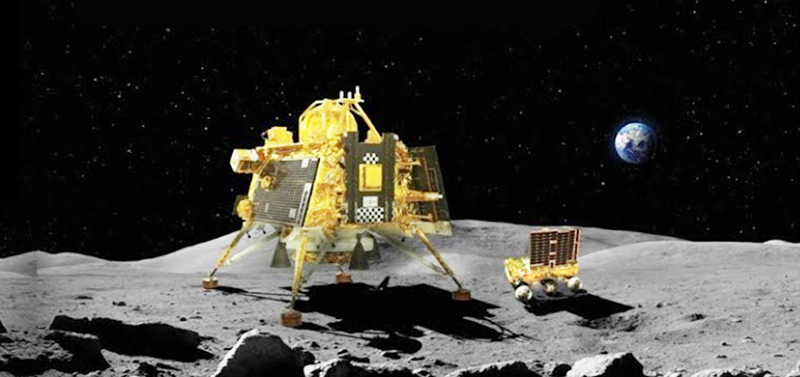
India's Chandrayaan-3 mission may have just recorded the first seismic data on the Moon since the 1970s. If confirmed to be natural seismic data, it could finally help scientists understand how the Moon's insides are arranged.
India's Lunar Rover Detects First Elements Ever Found at Moon's South Pole Science Alert - August 30, 2023
India's moon rover confirms sulfur and detects several other elements near the lunar south pole ABC - August 30, 2023
Chandrayaan-3 Wikipedia
An Expert Explains Why India's Historic Moon Landing Is So Important Science Alert - August 25, 2023
Indian rover begins exploring Moon's south pole PhysOrg - August 24, 2023
India makes history as Chandrayaan 3 lands near moon's south pole BBC - August 23, 2023
See striking moon photos captured by India's lunar lander during its approach CNN - August 22, 2023
Lunar Rover Reveals Hidden Layers Under The Surface of The Moon Science Alert - August 29, 2023
The Moon is known for its numerous craters that preserve the scars of turbulence from above. But just beneath the shattered lunar surface lies evidence of a succession of lava flows, detailing a different kind of chaos in the Moon's past arising from below.
Chinese Rover Reveals What Lies Beneath The Far Side Of The Moon IFL Science - August 21, 2023
The observation with the high-frequency radar mostly focused on the top 40 meters. That portion was mostly rock debris and regolith but revealed several layers too. And not just that: a buried crater was seen among the rubble. The Moon might be slow in altering its geology without an atmosphere and flowing water, but things do change.
Scientists detected a peculiar blob of heat-emitting material buried on the far side of the moon Live Science - July 11, 2023
This mysterious hotspot has a strange origin: It's likely caused by the natural radiation emanating from a huge buried mass of granite, which is rarely found in large quantities outside of Earth, according to new research. On the moon, a dead volcano that hasn't erupted for 3.5 billion years is likely the source of this unusual hunk of granite.
A 'quasi-moon' - asteroid - has been following Earth around the sun since 100 BC, and astronomers just noticed it Yahoo News - June 3, 2023
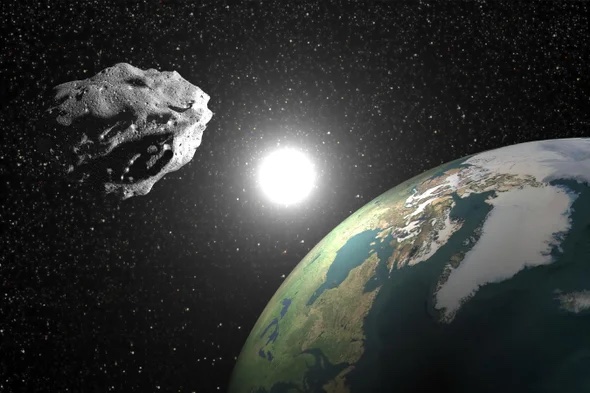
Scientists recently discovered an asteroid that tags along with Earth during its yearly journey around the sun. Dubbed 2023 FW13, the space rock is considered a "quasi-moon" or "quasi-satellite," meaning it orbits the sun in a similar time frame as Earth does, but is only slightly influenced by our planet's gravitational pull. It is estimated to be 50 feet (15 meters) in diameter - roughly equivalent to three large SUVs parked bumper to bumper.
During its orbit of the sun, 2023 FW13 also circles Earth, coming within 9 million miles (14 million kilometers) of our planet. For comparison, the moon has a diameter of 2,159 miles (3,474 km) and comes within 226,000 miles (364,000 km) of Earth at the closest point of its orbit, according to NASA.
Some estimates suggest that 2023 FW13 has been Earth's cosmic neighbor since at least 100 B.C. and that the space rock will continue to follow this orbital path until around A.D. 3700, Adrien Coffinet, an astronomer and journalist who first categorized the asteroid as a quasi-moon after modeling its orbit.
For the 1st time, scientists confirm the moon has a solid iron 'heart' just like Earth Live Science - May 5, 2023
After more than 50 years, scientists have finally uncovered the moon's interior structure, showing that our closest celestial companion has a fluid outer core and a solid inner core, similar to Earth's.
Water From The Sun Has Been Found on The Moon - Science Alert - January 1, 2023
A new analysis of dust retrieved from the Moon suggests that water bound up in the lunar surface could originate with the Sun. More specifically, it could be the result of bombardment of hydrogen ions from the solar wind, slamming into the lunar surface, interacting with mineral oxides, and bonding with the dislodged oxygen. The result is water that could be hiding in the lunar regolith in significant quantities at mid and high latitudes.
China's Rover Finds Traces of Never-Before-Seen Basalt on The Moon Science Alert - December 30, 2022
Scientists are continuing to analyze samples of rock and dirt brought back by China's Chang'e 5 lunar rover, and the latest results point to new kinds of geology from regions of the Moon that are yet to be discovered and explored.
Strange Magnetic Anomalies on The Moon Can Finally Be Explained Science Alert - December 7, 2022
Small, frozen, and silent, the Moon has a surprising distribution of magnetic fingerprints across its dusty surface, not all of which are easy to explain away. An in-depth understanding of the formation mechanism and distribution characteristics of magnetite on the Moon could provide a new perspective to explain the genesis of magnetic anomalies in the lunar crust.
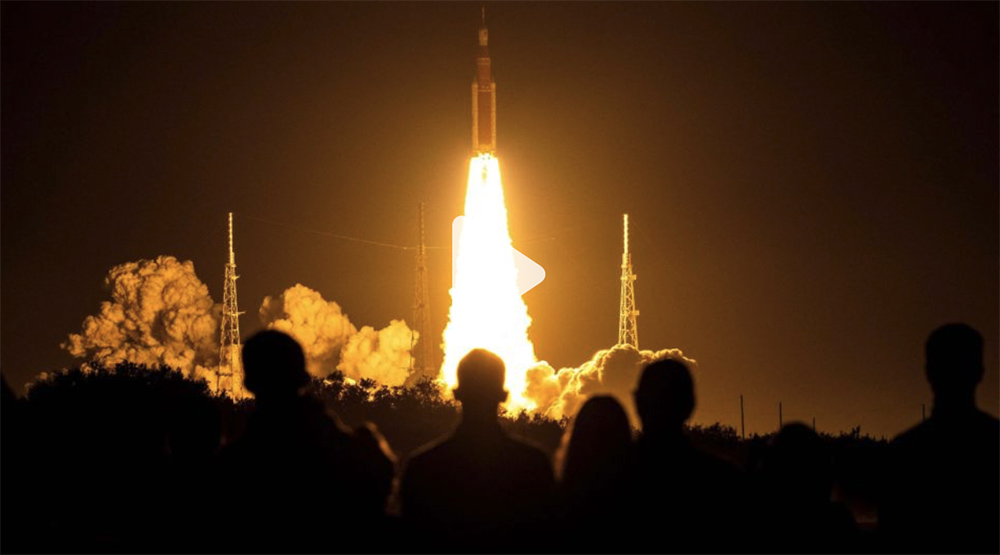
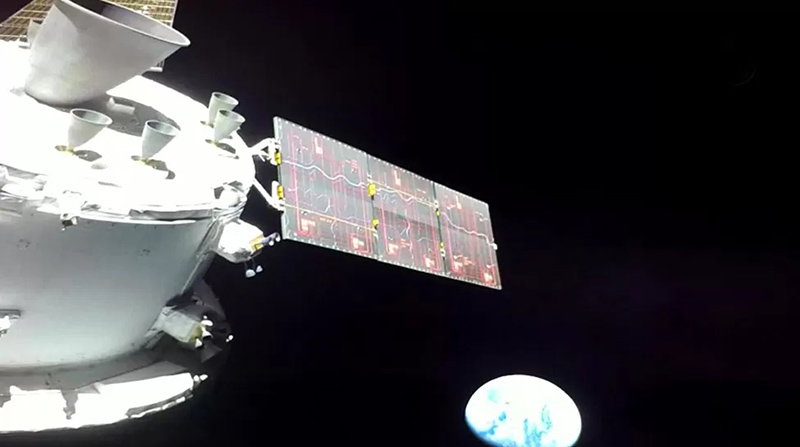
Wikipedia ~ NASA Tracking ~ In the News~ Images ~ Videos
How 2 astrophotographers teamed up to capture a stellar image of the moon NPR - August 22, 2022
Scientists discover 200 'Goldilocks' zones on the moon where astronauts could survive Live Science - July 30, 2022
Lunar scientists think they've found the hottest places on the Moon, as well as some 200 Goldilocks zones that are always near the average temperature in San Francisco. The moon has wild temperature fluctuations, with parts of the moon heating up to 260 degrees Fahrenheit (127 degrees Celsius) during the day and dropping to minus 280 F (minus 173 C) at night. But the newly analyzed 200 shaded lunar pits are always always 63 F (17 C), meaning they're perfect for humans to shelter from the extreme temperatures. They could also shield astronauts from the dangers of the solar wind, micrometeorites and cosmic rays. Some of those pits may lead to similarly warm caves. These partially-shaded pits and dark caves could be ideal for a lunar base, scientists say.
The Far Side of The Moon Is Significantly More Cratered. We May Finally Know Why Science Alert - April 11, 2022
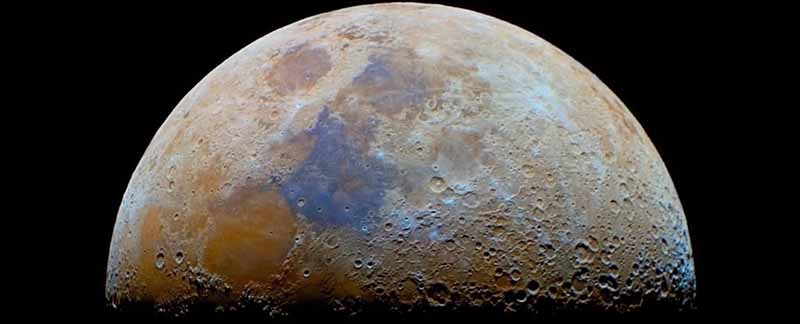
No matter where you're standing on Earth, you can only ever see one face of the Moon. Its other cheek is perennially turned away from our planet, and this far side is much more pockmarked with craters than the one facing us. The Moon's near side is covered in lunar maria, vast plains of volcanic basalt that appear as dark patches when we look up at our satellite. The reason for this two-faced appearance has remained a mystery - one that's persisted since the first spacecraft orbited the Moon in the 1960s. But a new simulation might now have solved the Apollo-era puzzle.
Piecing together the different features, computer models support the idea that a massive lunar impact once resurfaced the Moon's near side in lava flows. The differences are more than skin deep, since they're also reflected by distinct geological compositions on each side of the Moon. Astronomers have long suspected the near side was once covered in a sea of magma that, when cooled, smoothed the rocky landscape, creating the dark blemishes we see today. But the trigger for this volcanic activity is contentious. A massive crater at the Moon's south pole, known as the South Pole-Aitken basin (SPA), could explain the differences.
China's Yutu-2 mission has made another fascinating discovery on the far side of the Moon Science Alert - February 23, 2022
Glistening amid the dry, gray dust, the rover's panoramic camera picked out two small intact spheres of translucent glass. Such spherules can record information about the Moon's history, including the composition of its mantle and impact events. Yutu-2 was unable to obtain compositional data, but these natural lunar marbles could be important research targets in the future.
Chinese Lunar Lander Makes The First Ever On-Site Detection of Water on The Moon Science Alert - January 11, 2022
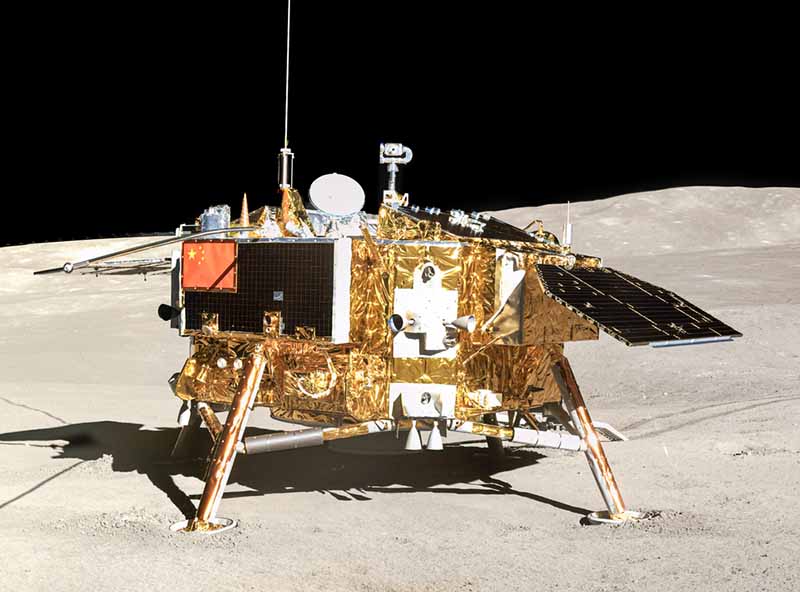
When China's Chang'E-5 probe visited the Moon in December of 2020, it didn't just collect a sample of lunar material to return to Earth. While it was there, the mission took observations of the surrounding lunar rock Š data vital for contextualizing the sample in future studies. Those observations have turned out to be a treasure. In spectroscopic images of the lunar regolith, scientists have now found evidence of water on the Moon. According to measurements taken using Chang'E-5's lunar mineralogical spectrometer, water can be found in abundances of up to 120 parts per million in the Northern Oceanus Procellarum where the spacecraft landed.
Lunar samples solve mystery of the moon's supposed magnetic shield PhysOrg - August 5, 2021
In 2024, a new age of space exploration will begin when NASA sends astronauts to the moon as part of their Artemis mission, a follow-up to the Apollo missions of the 1960s and 1970s. Some of the biggest questions that scientists hope to explore include determining what resources are found in the moon's soil and how those resources might be used to sustain life.
Scientists want to store DNA of 6.7 million species on the moon, just in case - Live Science - March 14, 2021
Scientists want to store DNA of 6.7 million species on the moon, just in case. A "lunar ark" hidden inside the moon's lava tubes could preserve the sperm, eggs and seeds of millions of Earth's species, a group of scientists has proposed. The ark, or gene bank, would be safely hidden in these hollowed-out tunnels and caves sculpted by lava more than 3 billion years ago and would be powered by solar panels above. It would hold the cryogenically preserved genetic material of all 6.7 million known species of plants, animals and fungi on Earth, which would require at least 250 rocket launches to transport to the moon
The Moon Has a Comet-Like Tail. Every Month It Shoots a Beam Around Earth NY Times - March 5, 2021
The moon, lacking an atmosphere to shield it, is constantly under attack. When meteorites bombard its volcanic surface, sodium atoms fly high into orbit. The sun's photons collide with the sodium atoms, effectively pushing them away from the sun and creating a tail-like structure flowing downstream from the moon. It makes the moon sort of look like a comet. For a few days each month, when the new moon moves between Earth and the sun, this comet-like tail dusts the side of our world that is facing the sun. Our planet's gravity pinches that sodium stream, narrowing it into a beam, invisible to the naked eye, that wraps around Earth's atmosphere and shoots out into space from the opposite side of the planet.
Water on the Moon could sustain a lunar base BBC - October 27, 2020
Having dropped tantalizing hints days ago about an "exciting new discovery about the Moon", the US space agency has revealed conclusive evidence of water on our only natural satellite. This "unambiguous detection of molecular water" will boost Nasa's hopes of establishing a lunar base. The aim is to sustain that base by tapping into the Moon's natural resources.
Water on the Moon: Research unveils its type and abundance - boosting exploration plans PhysOrg - October 27, 2020
'
Bizarre Discovery Reveals The Moon Is Rusting, Even Without Liquid Water And Oxygen Science Alert - September 4, 2020
The Moon, our closest cosmic neighbour, and the only other body in the Solar System on which humans have set foot, is fairly well known to us. We know that there is practically no air. We know that there is water ice, but no liquid water.
Entire cities could fit inside the moon's monstrous lava tubes Live Science - August 5, 2020
Mars is pockmarked with absolutely massive lava tubes, with ceilings as high as the Empire State Building, new research shows. And the moon hosts even more gargantuan tubes, with heights that dwarf Dubai's Burj Khalifa, the world's tallest building, and "skylights" as big as football fields. These yawning, subterranean caverns, which are shielded from punishing solar radiation, could be used as sites for future human bases, scientists argue. A lava tube is a tunnel under a world's surface, formed by an intense flow of molten rock during a volcanic explosion. On Earth, they're most easily spotted when they collapse, forming long furrows in the dirt. Partial collapses sometimes form chains of "skylights" that reveal hidden lava tubes that are mostly intact. Researchers have speculated that lava tubes might exist on Mars and the moon since the 1960s, but in recent years Martian and lunar orbiters have beamed home images showing how common these formations likely are, both on the Red Planet and on our moon.
Lava tubes on Mars and the Moon are so wide they can host planetary bases PhysOrg - August 5, 2020
Researchers found that Martian and lunar tubes are respectively 100 and 1,000 times wider than those on Earth, which typically have a diameter of 10 to 30 meters. Lower gravity and its effect on volcanism explain these outstanding dimensions (with total volumes exceeding 1 billion of cubic meters on the Moon). Tubes as wide as these can be longer than 40 kilometers, making the Moon an extraordinary target for subsurface exploration and potential settlement in the wide protected and stable environments of lava tubes. The latter are so big they can contain Padua's entire city center
Study reveals composition of gel-like substance discovered by Chang'e-4 rover on Moon's far side PhysOrg - July 21, 2020
The unusual dark greenish and glistening gel-like substance in a crater on the far side of the moon has attracted widespread interest following its discovery by the Chang'e-4 rover in July 2019. Researchers found that the unusual substance is actually an impact melt breccia, and the provenance of the rover measured surrounding regolith might originate from a differentiated melt pool or from a suite of igneous rocks.
Glistening 'Gel-Like' Substance on Far Side of The Moon Finally Identified - rock that was melted together likely in the heat of a meteorite impact - to form a dark green, glossy, glassy mass Science Alert - July 8, 2020
A peculiar "gel-like" substance the Chinese Yutu-2 rover discovered in a small impact crater on the far side of the Moon last year has now been identified. According to analysis of the images, and comparison with Apollo samples here on Earth, it's exactly what you'd expect to find on the Moon: rock.
There's more metal on the moon than we thought Space.com - July 6, 2020
Earth's moon is more metal than scientists imagined. NASA's prolific Lunar Reconnaissance Orbiter (LRO) found rich evidence of iron and titanium oxides under the surface of the moon, which may show a close connection with Earth's early history.
Scientists provide new explanation for the strange asymmetry of the moon PhysOrg - June 23, 2020
The Earth - moon system's history remains mysterious. Scientists believe the system formed when a Mars-sized body collided with the proto-Earth. Earth ended up being the larger daughter of this collision and retained enough heat to become tectonically active. The moon, being smaller, likely cooled down faster and geologically froze. The apparent early dynamism of the moon challenges this idea.asymmetry of the moon
Tardigrades: We're now polluting the moon with near indestructible little creatures PhysOrg - August 10, 2019
An Israeli spacecraft called Beresheet almost made it to the moon in April. It took a selfie with the lunar surface in the background, but then lost contact with Earth and presumably crashed onto the lunar surface. Now it's been revealed that the mission was carrying a cargo of dehydrated microscopic lifeforms known as tardigrades.
Thousands of Tardigrades Stranded on the Moon After Lunar Lander Crash Live Science - August 7, 2019
When you look up at the moon, there may now be a few thousand water bears looking back at you. The Israeli spacecraft Beresheet crashed into the moon during a failed landing attempt on April 11. In doing so, it may have strewn the lunar surface with thousands of dehydrated tardigrades.
There's a huge mass embedded in the center of the moon, and astronomers aren't sure what it is CNN - June 11, 2019
Here is something you may not know about the moon: Earth's clingy best friend is also the site of one of the largest-known impact craters in our entire solar system. Essentially, something caused a giant hole on the moon billions of years ago, and astronomers have just discovered that there's something big -- really big -- buried underneath the surface.
An 'Anomaly' the Size of Hawaii Is Buried Beneath the Moon's Biggest Crater Live Science - June 10, 2019
Chang'e-4: Chinese rover 'confirms' Moon crater theory BBC - May 16, 2019
The Chinese Chang'e-4 rover may have confirmed a longstanding idea about the origin of a vast crater on the Moon's far side.
The rover's landing site lies within a vast impact depression created by an asteroid strike billions of years ago. Now, mission scientists have found evidence that impact was so powerful it punched through the Moon's crust and into the layer below called the mantle. Chang'e-4 has identified what appear to be mantle rocks on the surface. It's something the rover was sent to the far side to find out.
China's Moon Lander Just Revealed a Secret on the Far Side of the Moon Live Science - May 16, 2019
Oldest crater on the moon was created by a giant asteroid: Chinese probe finds rocks from deep inside the moon on its surface Š and now scientists want to bring them back to Earth Daily Mail - May 16, 2019
Grave of Israeli Lunar Lander Spotted by NASA Spacecraft Live Science - May 16, 2019
The Moon Is Shrinking and That's Causing Tons of Moonquakes Live Science - May 14, 2019
The moon is shrinking. And as the crust of our lone satellite contracts, it tugs on cliff-like cracks on the surface, leading to lots of moonquakes, scientists just discovered. The study researchers recently revisited moonquake data gathered by seismic equipment on the Apollo lunar missions, from 1969 to 1977. They examined moonquakes that occurred at shallow depths, using new algorithms to pinpoint where the moonquakes came from, according to a new study. Then, the scientists mapped the seismic data to satellite images of thrust faults, or scarps - stairstep cliffs on the lunar surface. These formations stand dozens of feet high and extend for miles, and they are visible in images captured by NASA's Lunar Reconnaissance Orbiter (LRO).
Shrinking moon may be generating moonquakes Science Daily - May 13, 2019
Will China's Moon Landing Launch a New Space Race?
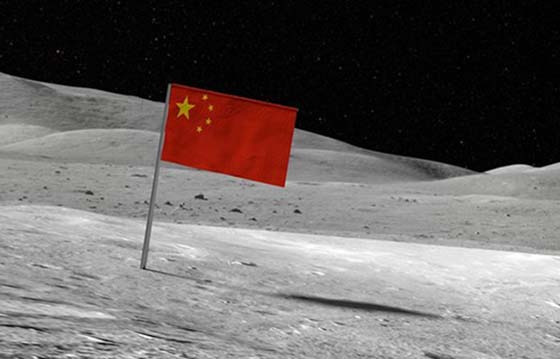
Chinese Moon Rover Making Tracks on Lunar Far Side
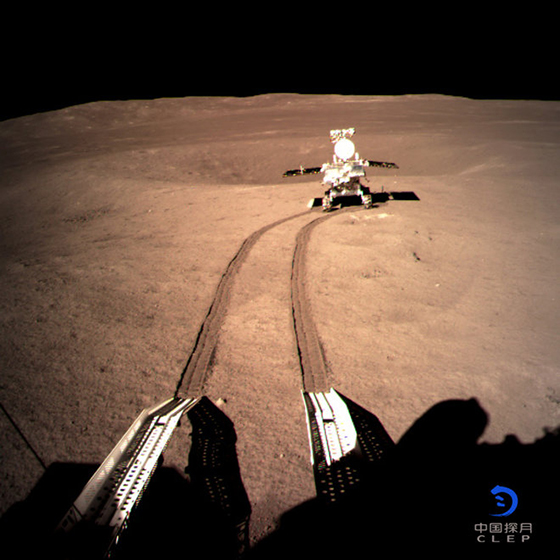
There Are Plants and Animals on the Moon Now (Because of China)
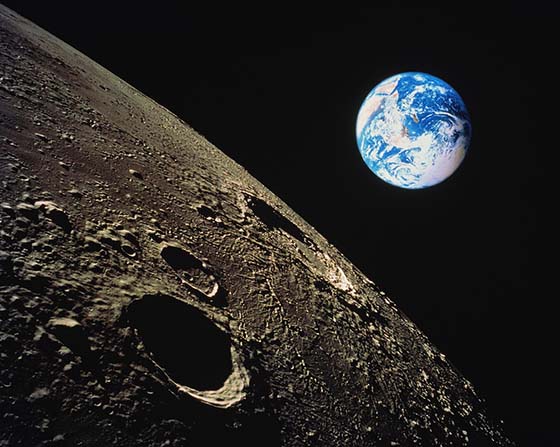
Far Side of the Moon: How Chang'e 4 Can Crack Lunar Mysteries

Physicists provide first model of moon's rotational dynamics, accounting for the solid inner core PhysOrg - December 19, 2018
A new model of the moon's rotational dynamics - the first that takes into account the moon's solid inner core - helps explain why it appears to wobble on its axis. The answer lies in the complex geometry of the moon's orbit, locked in what is known as a Cassini state
The 'man in the moon' is actually made up of 40-mile-long 'lunar swirls': Patterns that look like a smiling face were created by magnetic lava flows beneath the surface Daily Mail - September 7, 2018
The 'man in the moon' illusion, familiar to various cultures across the globe, is the result of magnetic dust left by ancient lava, a new study suggests. The dust created lunar swirls, bright, mysterious patterns on the surface of the rocky satellite that are often mistaken for faces and other shapes during a full moon. Nasa has known about the swirls for decades, describing them as 'like the cream in your coffee', but until now it was not known what caused them.
Mysterious 'lunar swirls' point to moon's volcanic, magnetic past Science Daily - September 6, 2018
The mystery behind lunar swirls, one of the solar system's most beautiful optical anomalies, may finally be solved. The solution hints at the dynamism of the moon's ancient past as a place with volcanic activity and an internally generated magnetic field. It also challenges our picture of the moon's existing geology.
Ice confirmed at the moon's poles Science Daily - August 21, 2018
Water ice 'detected on Moon's surface' BBC - August 21, 2018
Scientists say they have definitive evidence for water-ice on the surface of the Moon. The ice deposits are found at both the north and south poles, and are likely to be ancient in origin. The result comes from an instrument on India's Chandrayaan-1 spacecraft, which explored the Moon between 2008 and 2009. The distribution of the ice deposits is patchy. At the lunar south pole, most of the ice is concentrated in craters. At the northern pole, the water-ice is both more sparse and more widely spread. The Moon Mineralogy Mapper (M3) instrument aboard Chandrayaan identified three specific signatures of water-ice at the lunar surface. M3 not only picked up the reflective properties one would expect from ice, but was able to directly measure the distinctive way its molecules absorb infrared light. This meant that it could differentiate between liquid water and vapour and solid ice.
Scientists discover rare mineral in lunar meteorite that suggests frozen water may be hiding beneath the moon's surface Daily Mail - May 4, 2018
Mankind's first home away from Earth may soon be discovered, as new research shows that frozen water may be lurking beneath the moon's surface -- giving new hope that the dusty planet could sustain human life. Scientists say they've discovered traces of a rare mineral, called moganite, in a lunar meteorite that was found 13 years ago in northwest Africa. Mogamite, which is a crystal similar to quartz, requires the presence of water in order to form, so its discovery is being hailed as new proof that frozen water exists beneath the moon's surface.
The moon once had an atmosphere Science Daily - October 12, 2017
A new study shows that an atmosphere was produced around the ancient Moon, 3 to 4 billion years ago, when intense volcanic eruptions spewed gases above the surface faster than they could escape to space.
Moon has a water-rich interior Science Daily - July 24, 2017
Using satellite data, researchers have for the first time detected widespread water within ancient explosive volcanic deposits on the moon, suggesting that its interior contains substantial amounts of indigenous water. A new study of satellite data finds that numerous volcanic deposits distributed across the surface of the Moon contain unusually high amounts of trapped water compared with surrounding terrains. The finding of water in these ancient deposits, which are believed to consist of glass beads formed by the explosive eruption of magma coming from the deep lunar interior, bolsters the idea that the lunar mantle is surprisingly water-rich.
Scientists: Moon over the hill at 4.51 billion years old PhysOrg - January 11, 2017
It turns out the moon is older than many scientists suspected: a ripe 4.51 billion years old. That's the newest estimate, thanks to rocks and soil collected by the Apollo 14 moonwalkers in 1971. A research team reported Wednesday that the moon formed within 60 million years of the birth of the solar system. Previous estimates ranged within 100 million years, all the way out to 200 million years after the solar system's creation, not quite 4.6 billion years ago. The scientists conducted uranium-lead dating on fragments of the mineral zircon extracted from Apollo 14 lunar samples. The pieces of zircon were minuscule - no bigger than a grain of sand.
How Earth's previous moons collided to form the moon: New theory Science Daily - January 9, 2017
new theory suggests the Moon we see every night is not Earth's first moon, but rather the last in a series of moons that orbited our planet. Moons formed through the process could cross orbits, collide and merge, slowly building the bigger moon we see today. The newly proposed theory by researchers runs counter to the commonly held "giant impact" paradigm that the moon is a single object that was formed following a single giant collision between a small Mars-like planet and the ancient Earth.
The Many-Moons Theory New Yorker - January 9, 2017
Unbeknownst to most earthlings, the moon is experiencing a crisis. Geophysicists will tell you that it's a compositional crisis - a crisis regarding the stuff of which the moon is composed. But it's also an identity crisis, as much for the scientists as for the object they study.
New finding supports Moon creation hypothesis PhysOrg - September 26, 2016
A layer of iron and other elements deep underground is the evidence scientists have long been seeking to support the hypothesis that the moon was formed by a planetary object hitting the infant Earth some 4.5 billion years ago, a new study led by Johns Hopkins University scientists argues. A paper uses laboratory simulations of an Earth impact as evidence that a stratified layer beneath the rocky mantle Š which appears in seismic data Š was created when the Earth was struck by a smaller object. The authors argue this was the same impact that sent a great mass of debris hurtling into space, creating the moon.
Vast asteroid created 'Man in Moon's eye' crater BBC - July 20, 2016
One of the Moon's biggest craters was created by an asteroid more than 250km (150 miles) across, a study suggests. It smashed into the lunar surface about 3.8 billion years ago, forming Mare Imbrium - the feature also known as the right eye of the "Man in the Moon". Scientists say the asteroid was three times bigger than previously estimated and debris from the collision would have rained down on the Earth.
Earth's moon wandered off axis billions of years ago Science Daily - March 23, 2016
A new study reports Earth's moon wandered off its original axis roughly 3 billion years ago. Ancient lunar ice indicates the moon's axis slowly shifted by 125 miles, or 6 degrees, over 1 billion years. Earth's moon now a member of solar system's exclusive 'true polar wander' club, which includes just a handful of other planetary bodies.
 Earth's moon wandered off axis billions of years ago, study finds PhysOrg - March 23, 2016
Earth's moon wandered off axis billions of years ago, study finds PhysOrg - March 23, 2016
A new study reports discovery of a rare event - Earth's moon slowly moved from its original axis roughly 3 billion years ago. Planetary scientists made the discovery while examining NASA data known to indicate lunar polar hydrogen. The hydrogen, detected by orbital instruments, is presumed to be in the form of ice hidden from the sun in craters surrounding the moon's north and south poles. Exposure to direct sunlight causes ice to boil off into space, so this ice - perhaps billions of years old - is a very sensitive marker of the moon's past orientation.
 NASA releases recording of 'outer-space type music' from far side of the moon CNN - March 24, 2016
NASA releases recording of 'outer-space type music' from far side of the moon CNN - March 24, 2016
This conversation, between Apollo 10 astronauts Eugene Cernan and John Young, as their craft flew around the far side of the moon, remained under wraps for over four decades. While transcripts were released in 2008, audio of the discussion, and the sounds that the astronauts were referencing, is only just being made public.
 New clues about how Earth got its moon CNN - January 30, 2016
New clues about how Earth got its moon CNN - January 30, 2016
It's the only world besides Earth that man has set foot on. But we still don't know exactly how it got there. Now, rocks brought back by the Apollo astronauts in the late '60s and early '70s are providing new clues about how Earth got its moon. Many scientists have long theorized that the moon formed after a planet called Theia crashed into Earth about 4.5 billion years ago.
New type of moon rock discovered by Chinese lunar lander The Guardian - December 23, 2015
The Yutu rover, part of the Chang'e-3 unmanned lunar mission, has identified a type of basalt unlike anything collected by previous Soviet or US missions. Chinese scientists have identified a new kind of rock on the moon. An unmanned Chinese lunar lander, launched in 2013, has explored an ancient flow of volcanic lava and identified mineral composition entirely unlike anything collected by the American astronauts between 1969 and 1972, or by the last Soviet lander in 1976.
Mound near lunar south pole formed by unique volcanic process Science Daily - October 15, 2015
Within a giant impact basin near the moon's south pole, there sits a large mound of mysterious origin. Research by geologists suggests that the mound was formed by unique volcanic processes set in motion by the impact that formed the basin.
Mound near lunar south pole formed by unique volcanic process PhysOrg - October 15, 2015
A giant mound near the Moon's south pole appears to be a volcanic structure unlike any other found on the lunar surface, according to new research by Brown University geologists. The formation, known as Mafic Mound, stands about 800 meters tall and 75 kilometers across, smack in the middle of a giant impact crater known as the South Pole-Aitken Basin. This new study suggests that the mound is the result of a unique kind of volcanic activity set in motion by the colossal impact that formed the basin.
Multiple studies address riddles of the Moon's origin BBC - April 9, 2015
The Moon may have been formed by a collision between Earth and an object that was strikingly similar in composition to our own planet. This could help resolve why Earth and Moon rocks are much more similar than we would expect from this "giant impact hypothesis". Two further research papers in the issue report subtle, previously unseen differences in lunar rocks. Scientists say they paint a consistent - and much clearer - picture of our satellite's history. The modeling study, done by researchers from Israel and France, precisely simulates the turmoil of the early, inner Solar System and quantifies the variety of collisions that might have occurred. In its early stages, the proto-Earth would have been subjected to a string of brutal collisions with other wannabe planets. According to our best understanding, the last of these was a cataclysmic tangle with a planetary body just ten times lighter than Earth - and the resulting debris eventually clumped together to make the Moon.
Violent formation of the moon: New view Science Daily - April 8, 2015
Scientists have reconciled the accepted model of the moon's formation with the unexpectedly similar isotopic fingerprints of both bodies. The results suggest that the impact that formed the moon was so violent, the resulting debris cloud mixed thoroughly before settling down and forming the moon.
Earth's other 'moon' and its crazy orbit could reveal mysteries of the solar system PhysOrg - February 25, 2015
We all know and love the moon. We're so assured that we only have one that we don't even give it a specific name. It is the brightest object in the night sky, and amateur astronomers take great delight in mapping its craters and seas. To date, it is the only other heavenly body with human footprints. What you might not know is that the moon is not the Earth's only natural satellite. As recently as 1997, we discovered that another body, 3753 Cruithne, is what's called a quasi-orbital satellite of Earth. This simply means that Cruithne doesn't loop around the Earth in a nice ellipse in the same way as the moon, or indeed the artificial satellites we loft into orbit. Instead, Cruithne scuttles around the inner solar system in what's called a "horseshoe" orbit.
How can we search for life on icy moons such as Europa? PhysOrg - November 25, 2014
Our solar system is host to a wealth of icy worlds that may have water beneath the surface. The Cassini spacecraft recently uncovered evidence of a possible ocean under the surface of Saturn's moon, Mimas. Mimas is not alone in the possibility of having a global ocean, which would potentially provide a foothold for life to exist. Other worlds under examination include Jupiter's moon, Europa. In 2013, NASA's Hubble Space Telescope observed evidence that Europa erupts water, while the Cassini spacecraft has observed geysers spewing on Saturn's moon, Enceladus.
 Young Volcanoes on the Moon NASA - November 25, 2014
Young Volcanoes on the Moon NASA - November 25, 2014
Planetary scientists have long thought that lunar volcanism came to an end about a billion years ago, and little has changed since. Yet Ina looked remarkably fresh. For more than 30 years Ina remained a mystery, a "one-off oddity" that no one could explain. Turns out, the mystery is bigger than anyone imagined. Using NASA's Lunar Reconnaissance Orbiter, a team of researchers led by Sarah Braden of Arizona State University has found 70 landscapes similar to Ina. They call them "Irregular Mare Patches" or IMPs for short.
Fossils could be discovered on the moon: Signs of ancient life may be littered across the moon Science Daily - July 31, 2014
Physicists have tested what would happen if a piece of rock containing microscopic fossils from Earth was launched into space and hit the surface of the moon. The team turned fossil-filled rock into powder which was mixed with water and frozen to replicate a meteoroid.
Moon mystery: Why our Earth's satellite is lemon-shaped BBC - July 30, 2014
Scientists have worked out the reasons for the distorted shape of our Moon. A US team calculated the effect on the shape of the early Moon of tidal and rotational forces. Shape-shifting occurred when the Moon was mostly liquid beneath a thin outer crust of rock. This interaction with the Earth also caused the Moon to shift slightly on its own axis.
 Traces of another world found on the Moon BBC - June 6, 2014
Traces of another world found on the Moon BBC - June 6, 2014
Researchers have found evidence of the world that crashed into the Earth billions of years ago to form the Moon. Analysis of lunar rock brought back by Apollo astronauts shows traces of the "planet" called Theia. The researchers claim that their discovery confirms the theory that the Moon was created by just such a cataclysmic collision. The accepted theory since the 1980s is that the Moon arose as a result of a collision between the Earth and Theia 4.5bn years ago.
Theia was named after a Titan goddess in Greek mythology who was said to be the mother Selene the goddess of the Moon. It is thought to have disintegrated on impact with the resulting debris mingling with that from the Earth and coalescing into the Moon. It is the simplest explanation, and fits in well with computer simulations. The main drawback with the theory is that no one had found any evidence of Theia in lunar rock samples. Earlier analyses had shown Moon rock to have originated entirely from the Earth whereas computer simulations had shown that the Moon ought to have been mostly derived from Theia.
Moon's Age Revealed, and a Lunar Mystery May Be Solved Live Science - April 3, 2014
Scientists have pinned down the birth date of the moon to within 100 million years of the birth of the solar system - the best timeline yet for the evolution of our planet's natural satellite. This new discovery about the origin of the moon may help solve a mystery about why the moon and the Earth appear virtually identical in makeup, investigators added. Scientists have suggested the moon was formed 4.5 billion years ago by a gigantic collision between a Mars-size object named Theiaand Earth, a crash that would have largely melted the Earth. This model suggested that more than 40 percent of the moon was made up of debris from this impacting body. Current theory suggests that Earth experienced several giant impacts during its formation, with the moon-forming impact being the last.
'Geologic clock' helps determine moon's age Science Daily - April 3, 2014
Planetary scientists have determined that the moon formed nearly 100 million years after the start of the solar system, according to a new article. This conclusion is based on measurements from the interior of the Earth combined with computer simulations of the protoplanetary disk from which the Earth and other terrestrial planets formed.
NASA HD Moon Map Reveals Lunar North Pole Like Never Before (Photo) Live Science - March 20, 2014
A new mosaic from NASA's Lunar Reconnaissance Orbiter showcases the north pole in high resolution. The images run from 60 to 90 degrees north latitude, with a resolution of 6.5 feet (2 meters) per pixel. At right are images of the Thales crater. A new high-resolution map of the moon's north pole shows a view of the surface that even the Apollo astronauts would envy. The new lunar mosaic - which was captured by NASA's Lunar Reconnaissance Orbiter (LRO) - resolves features as small as 6.5 feet (2 meters), providing information that could be used for landing-site scouting or to answer various questions about the surface of the moon, agency officials said. With scientists and the public able to click, zoom in and move around the map, it's the first time an interactive mosaic has been released of the moon's north pole.
'Biggest observed meteorite impact' hits Moon BBC - February 24, 2014
Scientists say they have observed a record-breaking impact on the Moon. Spanish astronomers spotted a meteorite with a mass of about half a tonne crashing into the lunar surface last September. They say the collision would have generated a flash of light so bright that it would have been visible from Earth. "This is the largest, brightest impact we have ever observed on the Moon," said Prof Jose Madiedo, of the University of Huelva in south-western Spain. The explosive strike was spotted by the Moon Impacts Detection and Analysis System (Midas) of telescopes in southern Spain on 11 September at 20:07 GMT.
 BBC - December 16, 2013
BBC - December 16, 2013
The first robot to land on the Moon in nearly 40 years, China's Jade Rabbit rover, has begun sending back photos, with shots of its lunar lander. Jade Rabbit rolled down a ramp lowered by the lander and on to the volcanic plain known as Sinus Iridum at 04:35 Beijing time on Saturday (20:35 GMT). It moved to a spot a few metres away, its historic short journey recorded by the lander. On Sunday evening the two machines began photographing each other. A Chinese flag is clearly visible on the Jade Rabbit as it stands deployed on the Moon's surface.
Water Hidden in the Moon May Have Proto-Earth Origin Science Daily - September 11, 2013
The Moon, including its interior, is believed to be much wetter than was envisaged during the Apollo era. The study investigated the amount of water present in the mineral apatite, a calcium phosphate mineral found in samples of the ancient lunar crust. These are some of the oldest rocks we have from the Moon and are much older than the oldest rocks found on Earth. The antiquity of these rocks make them the most appropriate samples for trying to understand the water content of the Moon soon after it formed about 4.5 billion years ago and for unravelling where in the Solar System that water came from.
Moon Water Discovery Hints at Mystery Source Deep Underground Live Science - August 28, 2013
Evidence of water spotted on the moon's surface by a sharp-eyed spacecraft likely originated from an unknown source deep in the lunar interior, scientists say. The find - made by NASA's Moon Mineralogy Mapper instrument aboard India's Chandrayaan-1 probe - marks the first detection of such "magmatic water" from lunar orbit and confirms analyses performed recently on moon rocks brought to Earth by Apollo astronauts four decades ago, researchers said.
Scientists Detect Magmatic Water On Moon's Surface Science Daily - August 27, 2013
Scientists have detected magmatic water -- water that originates from deep within the Moon's interior -- on the surface of the Moon. This surficial water unfortunately did not give us any information about the magmatic water that exists deeper within the lunar crust and mantle, but we were able to identify the rock types in and around Bullialdus crater.
Metamorphosis of Moon's Water Ice Explained Science Daily - June 19, 2013
Using data gathered by NASA's Lunar Reconnaissance Orbiter (LRO) mission, scientists believe they have solved a mystery from one of the solar system's coldest regions - a permanently shadowed crater on the moon. They have explained how energetic particles penetrating lunar soil can create molecular hydrogen from water ice. The finding provides insight into how radiation can change the chemistry of water ice throughout the solar system.
Mystery of Moon's Magnetic Field Deepens Live Science - May 10, 2013
The moon generated a surprisingly intense magnetic field until at least 3.56 billion years ago, 160 million years longer than previously thought, a new study reports. These findings could shed light not just on the magnetic field of the moon, which is now extremely weak, but on that of asteroids and other distant worlds, investigators added. Earth's magnetic field is created by its internal dynamo, which itself is generated by the planet's churning molten metal core. Research increasingly suggests that the moon once had a dynamo as well, with evidence of magnetism found in lunar rocks returned by Apollo astronauts.
Water on Earth and Moon May Have Same Source Live Science - May 10, 2013
Water deep inside Earth and the moon may originate from the same source: ancient meteorites, scientists say. The findings hint that water may have existed on Earth before the giant impact the planet received that created the moon, and that the moon possessed water from its earliest moments, scientists added. It remains a mystery exactly how water found within the moon survived this violent collision, though. Water is vital to life as we know it, with organisms found virtually everywhere there is water on Earth. When Earth was born, the ingredients of the planet's water most likely would have formed beyond the orbit of Earth. As such, all the water on the planet must have come from either comets or meteorites hurtling inward from the outer solar system.
New Scars Found on Moon, Hint at "Recent" Tectonic Activity National Geographic - February 23, 2012
Long trenches called graben suggest early moon wasn't fully melted. Parts of the moon's surface have been stretched apart to form shallow, sunken valleys, according to a new study based on NASA images. The presence of the long, thin valleys - known as graben - suggests that the moon has undergone relatively recent tectonic activity, within the past 50 million years or so. That activity in turn hints that the moon may not have been entirely melted when it first formed roughly 4.6 billion years ago. Instead the early moon likely
What if the earth had two moons? PhysOrg - December 28, 2011
he idea of an Earth with two moons has been a science fiction staple for decades. More recently, real possibilities of an Earth with two moon have popped up. The properties of the Moon's far side has many scientists thinking that another moon used to orbit the Earth before smashing in to the Moon and becoming part of its mass. Since 2006, astronomers have been tracking smaller secondary moons that our own Earth-Moon system captures; these metre-wide moons stay for a few months then leave.
Earth has two 'moons' right now, theorists say NBC - December 26, 2011
Earth has two moons, a group of scientists argues. One is that waxing and waning nightlight we all know and love. The other is a tiny asteroid, no bigger than a Smart Car, making huge doughnuts around Earth for a while before it zips off into the distance.
That's the scenario posited by the scientists in a paper published Dec. 20 in the planetary science journal Icarus. The researchers say there is a space rock at least 1 meter (3.3 feet) wide orbiting Earth at any given time. They're not always the same rock, but rather an ever-changing cast of "temporary moons."
Subtly shaded map of moon reveals titanium treasure troves PhysOrg - October 7, 2011
A map of the Moon combining observations in visible and ultraviolet wavelengths shows a treasure trove of areas rich in Titanium ores. Not only is Titanium a valuable mineral, it is key to helping scientists unravel the mysteries of the Moon's interior.